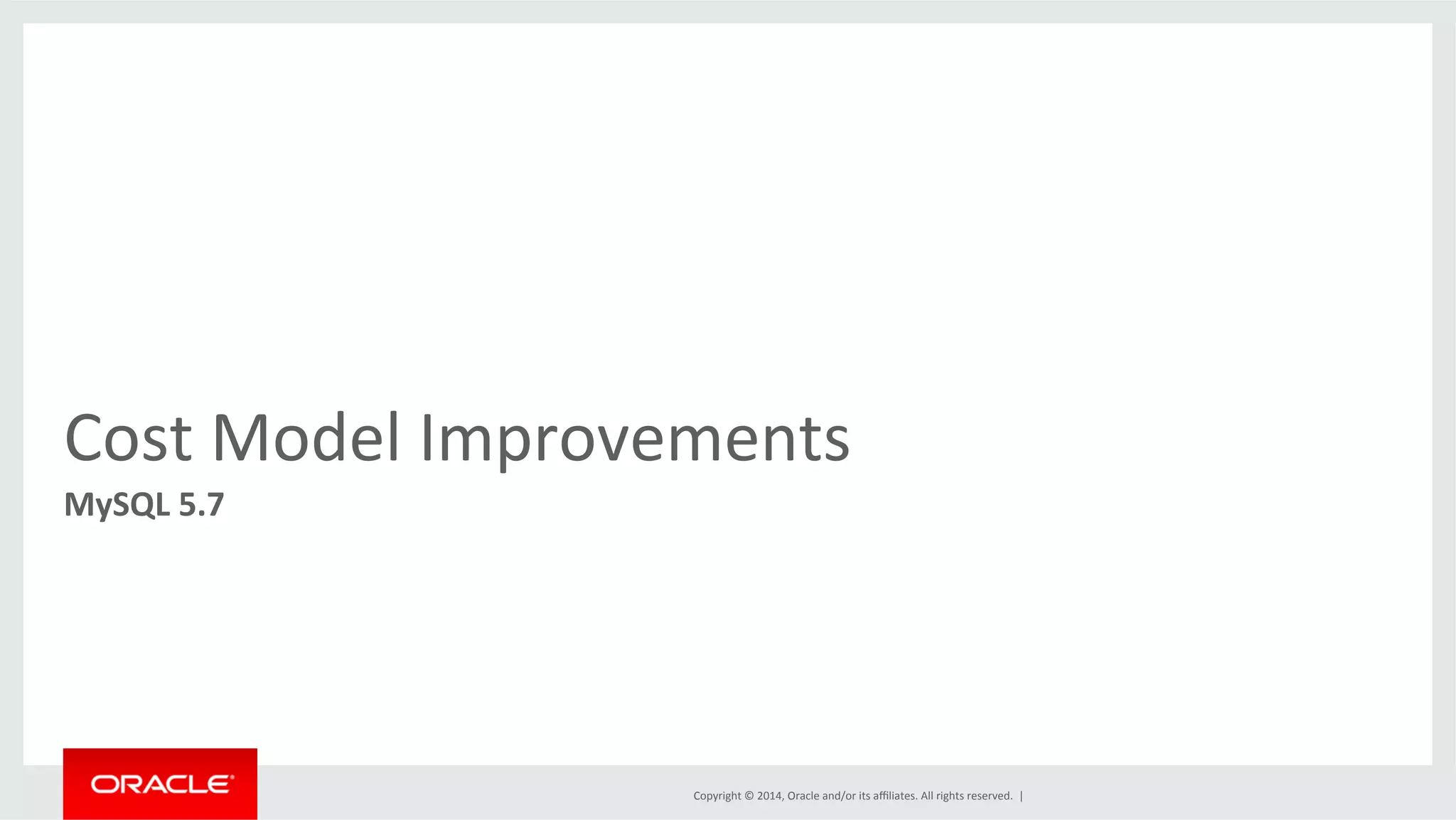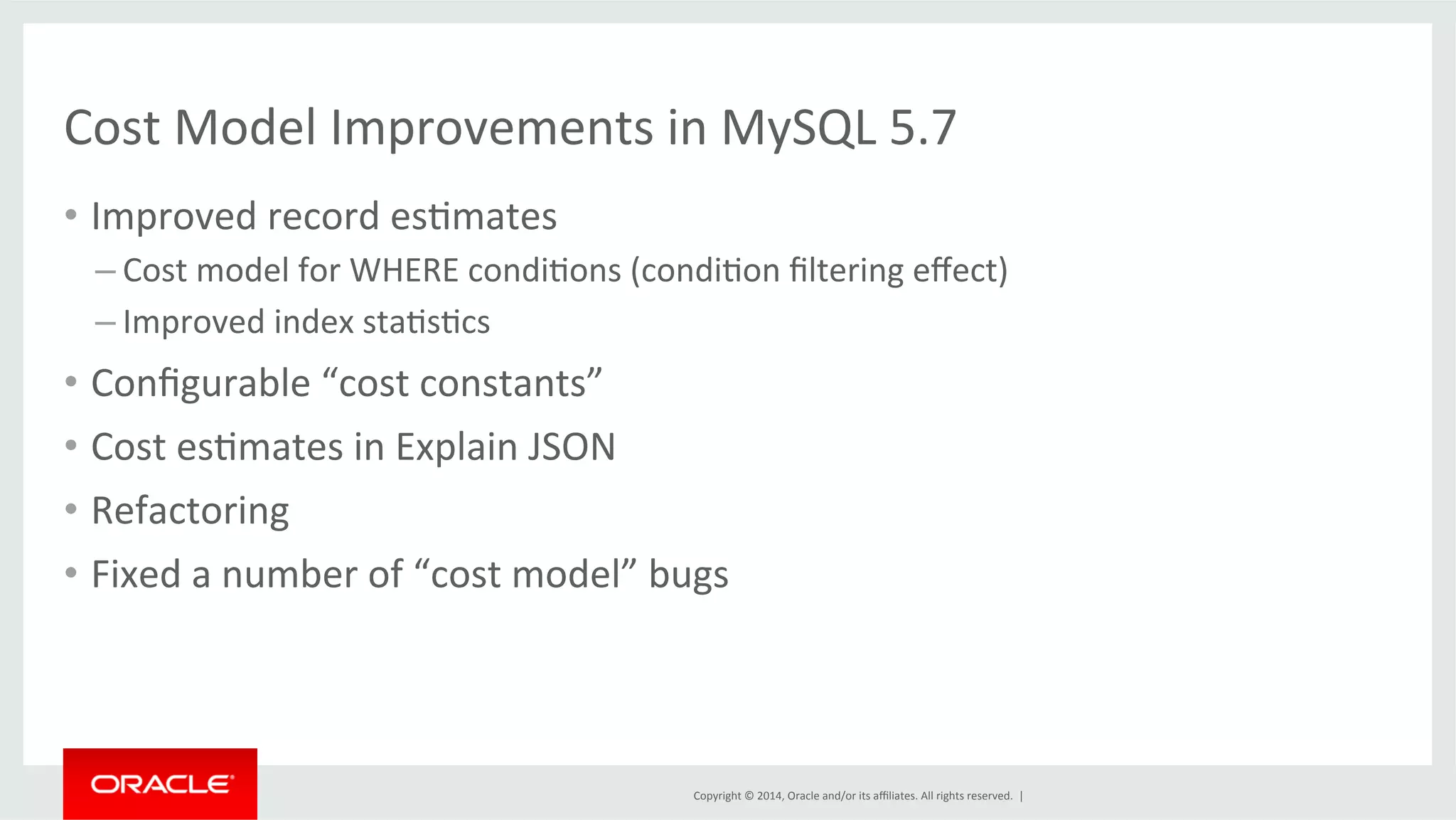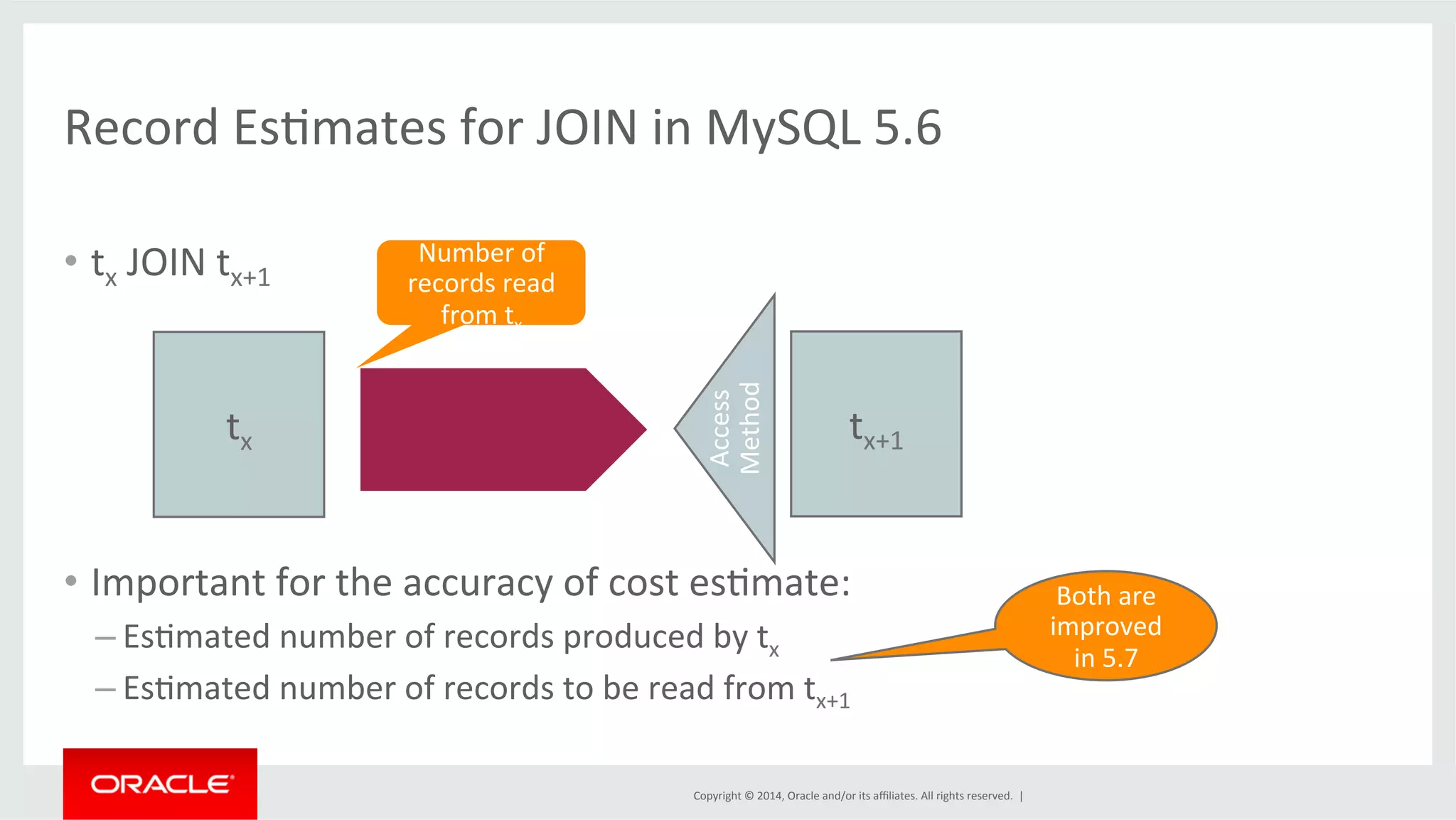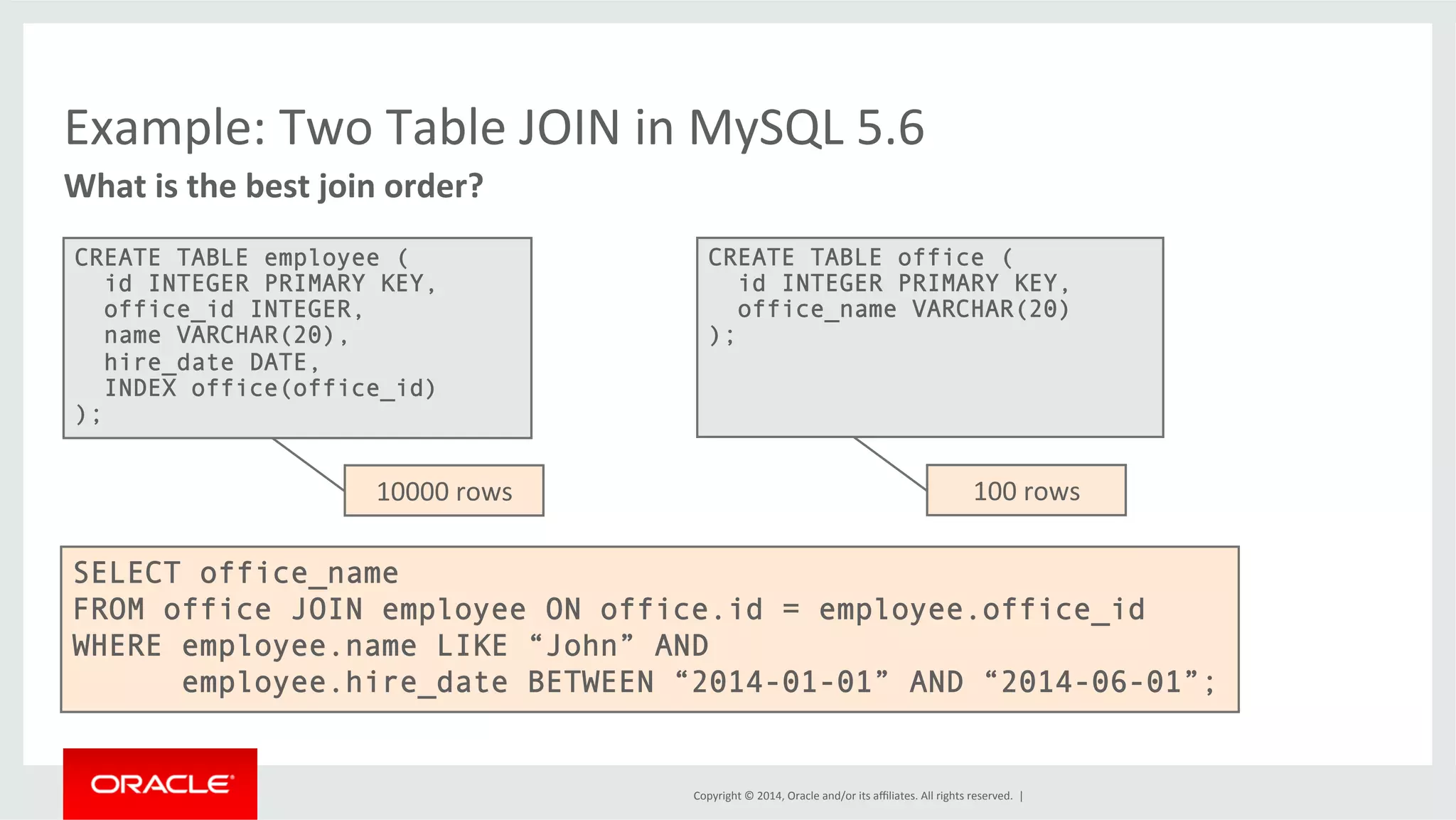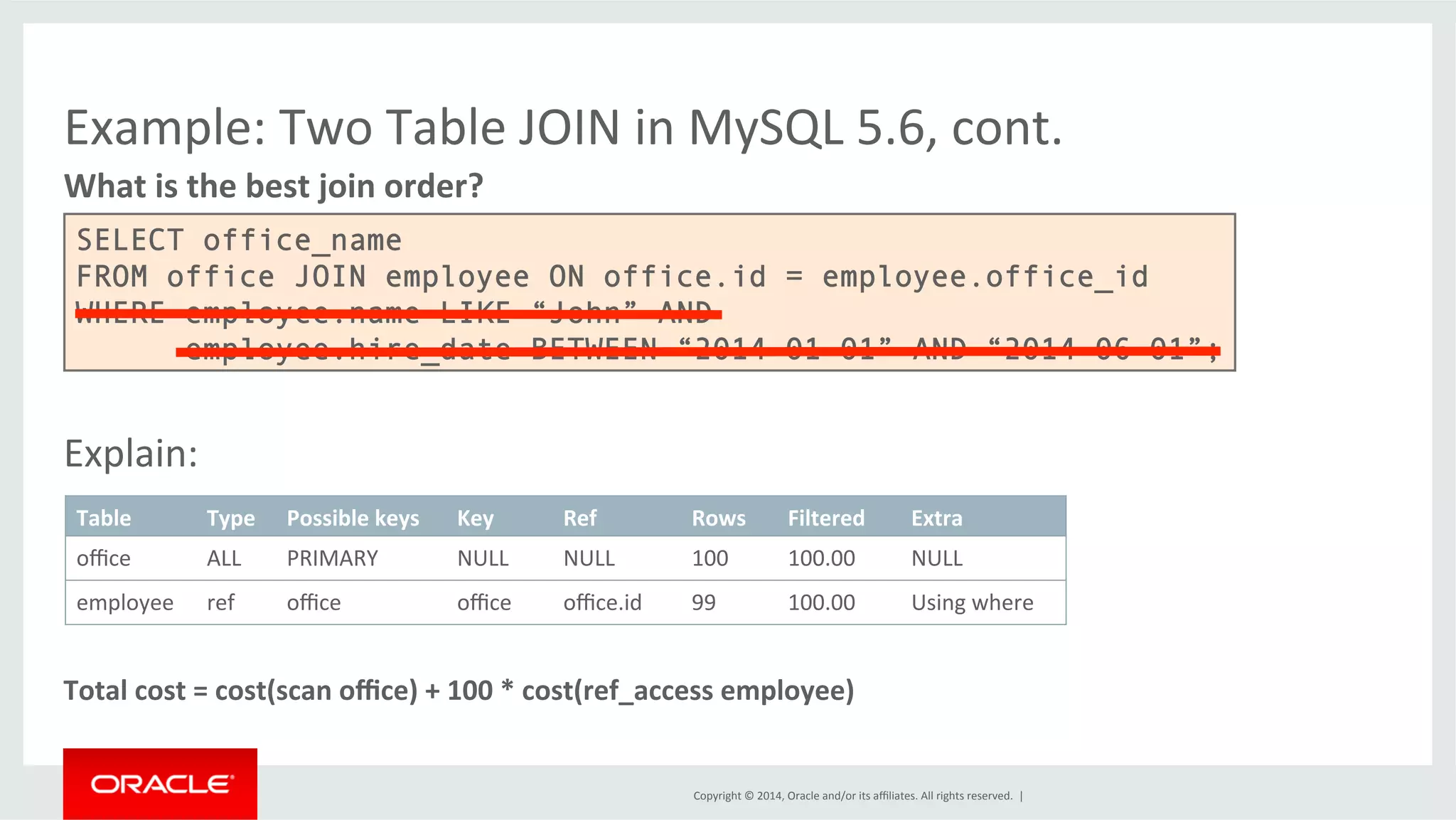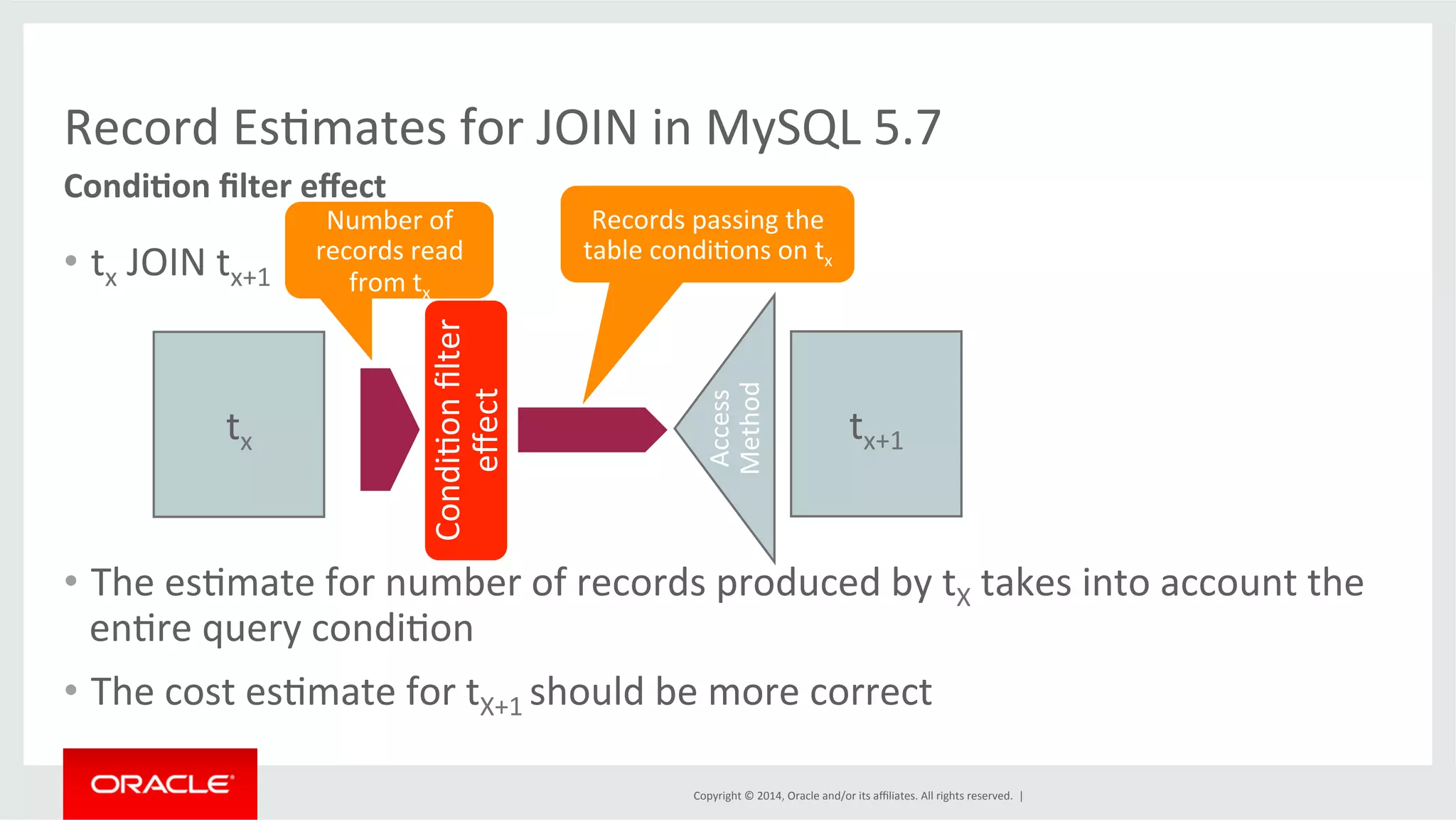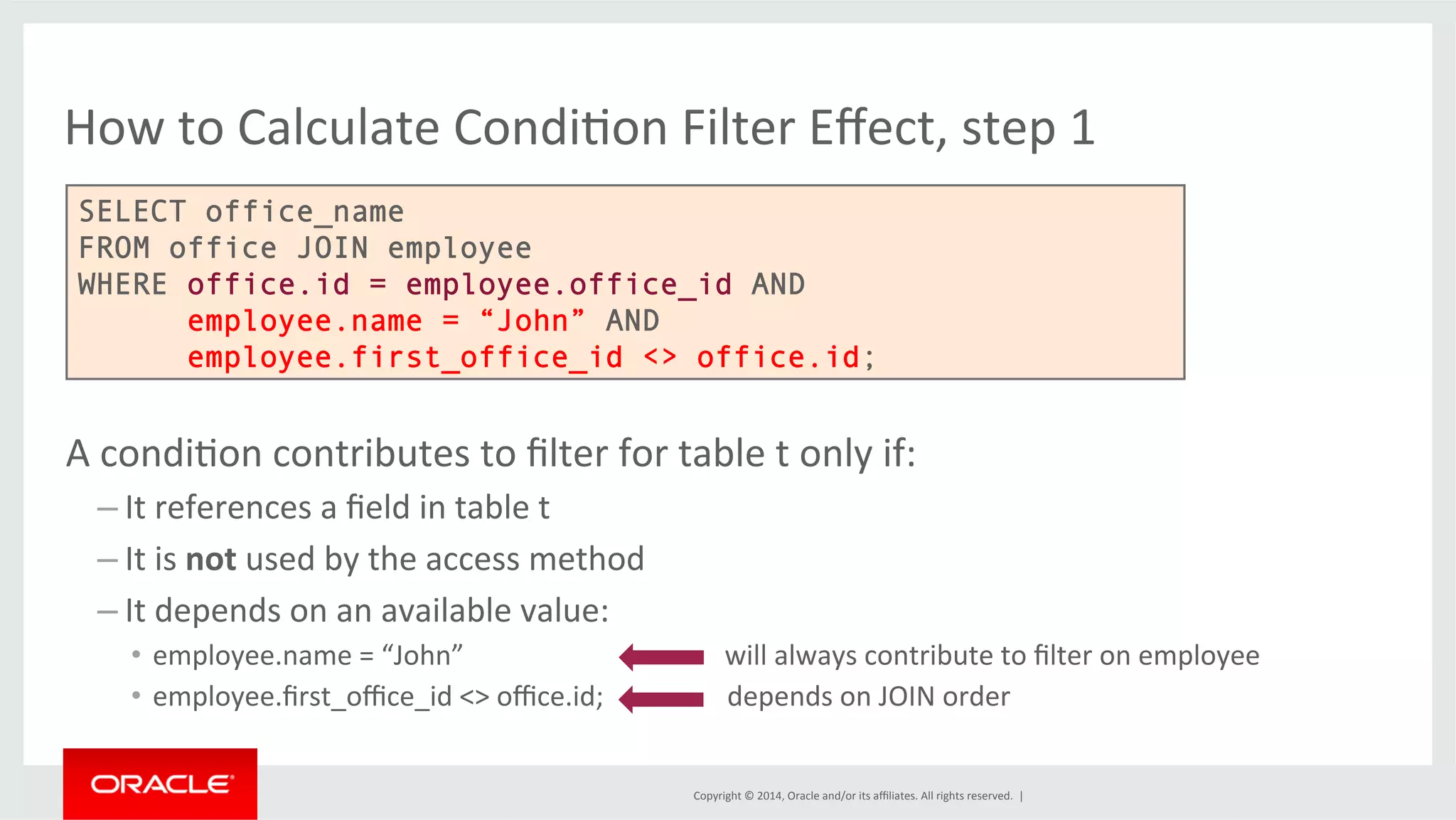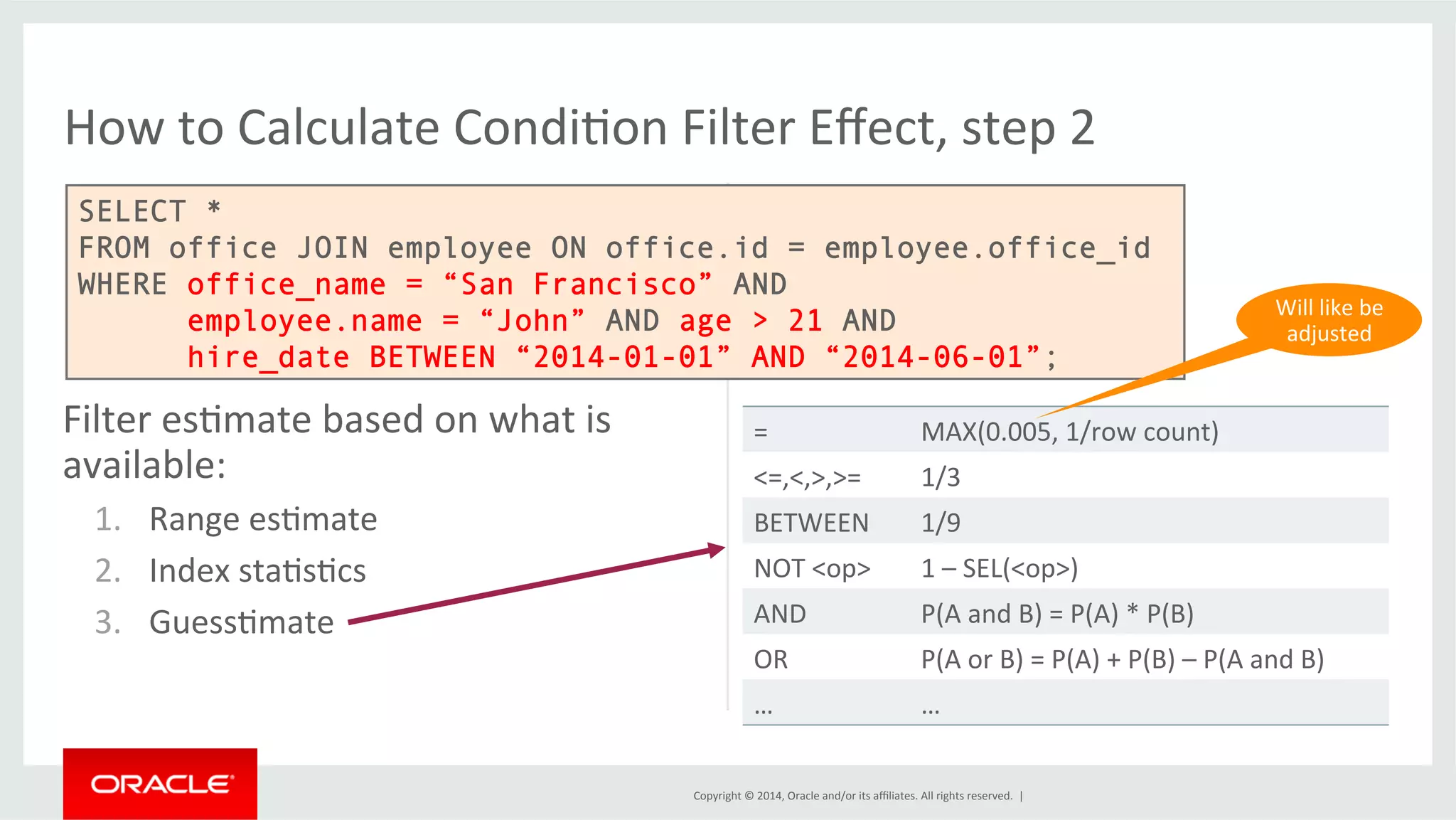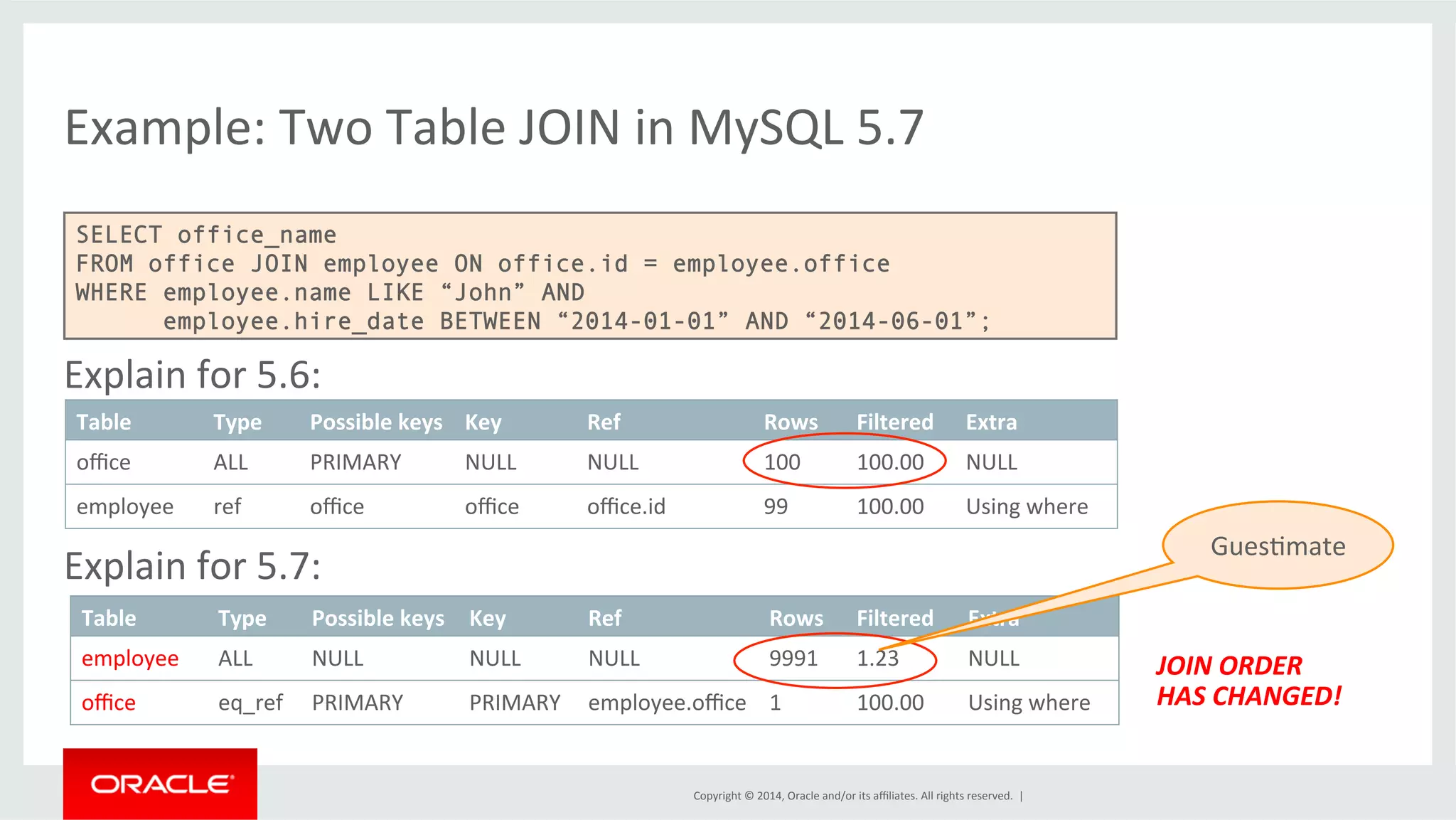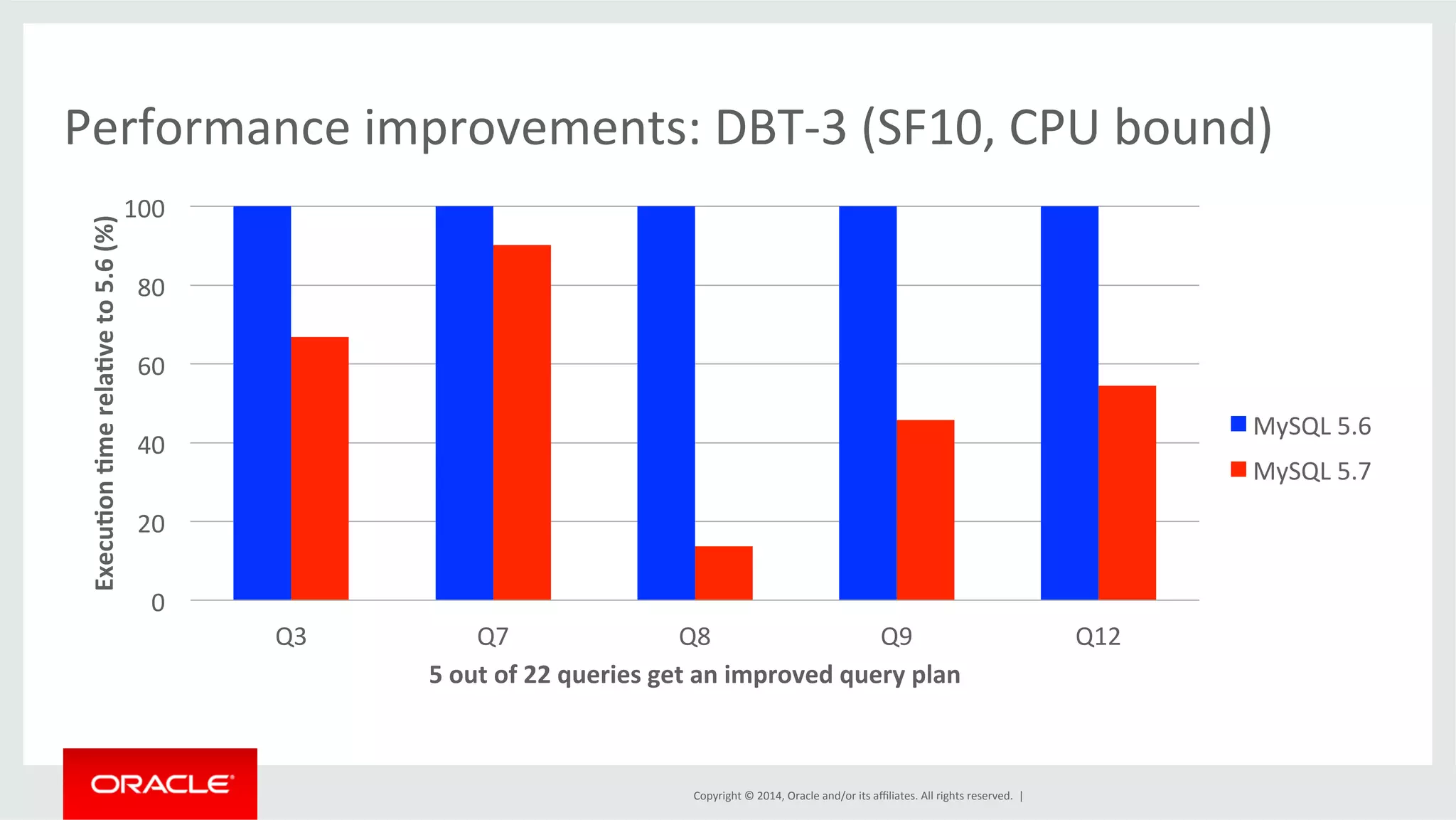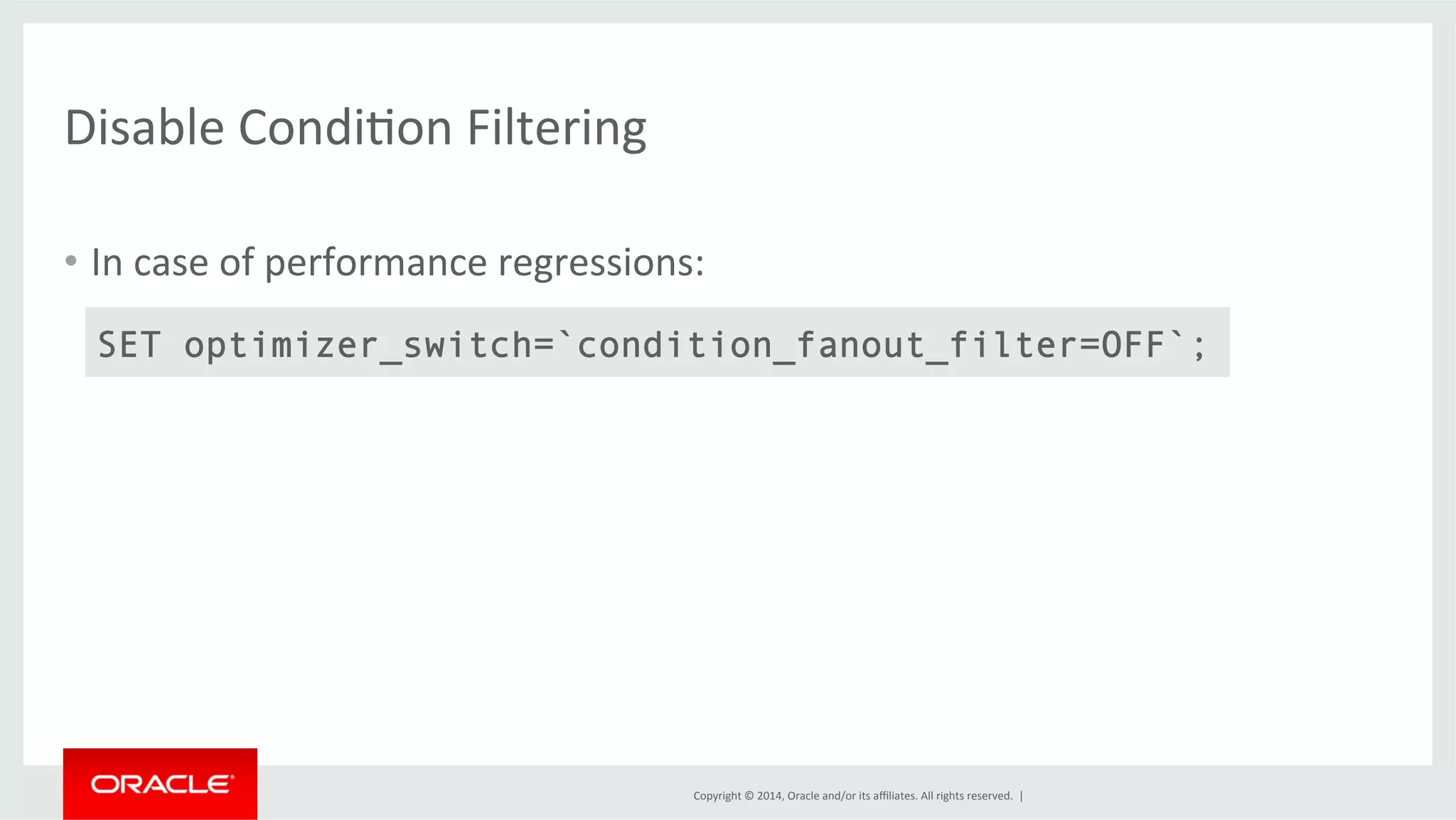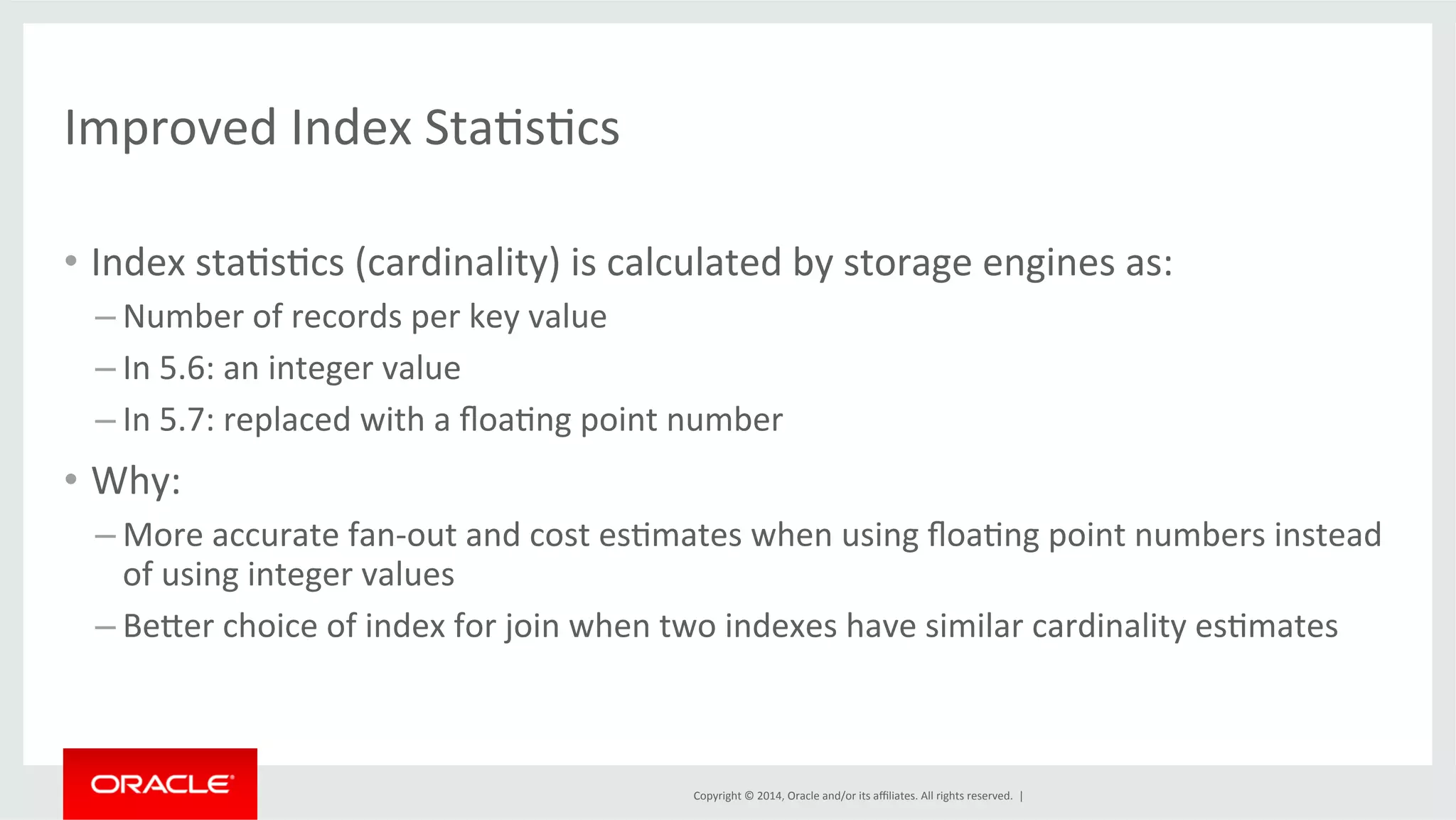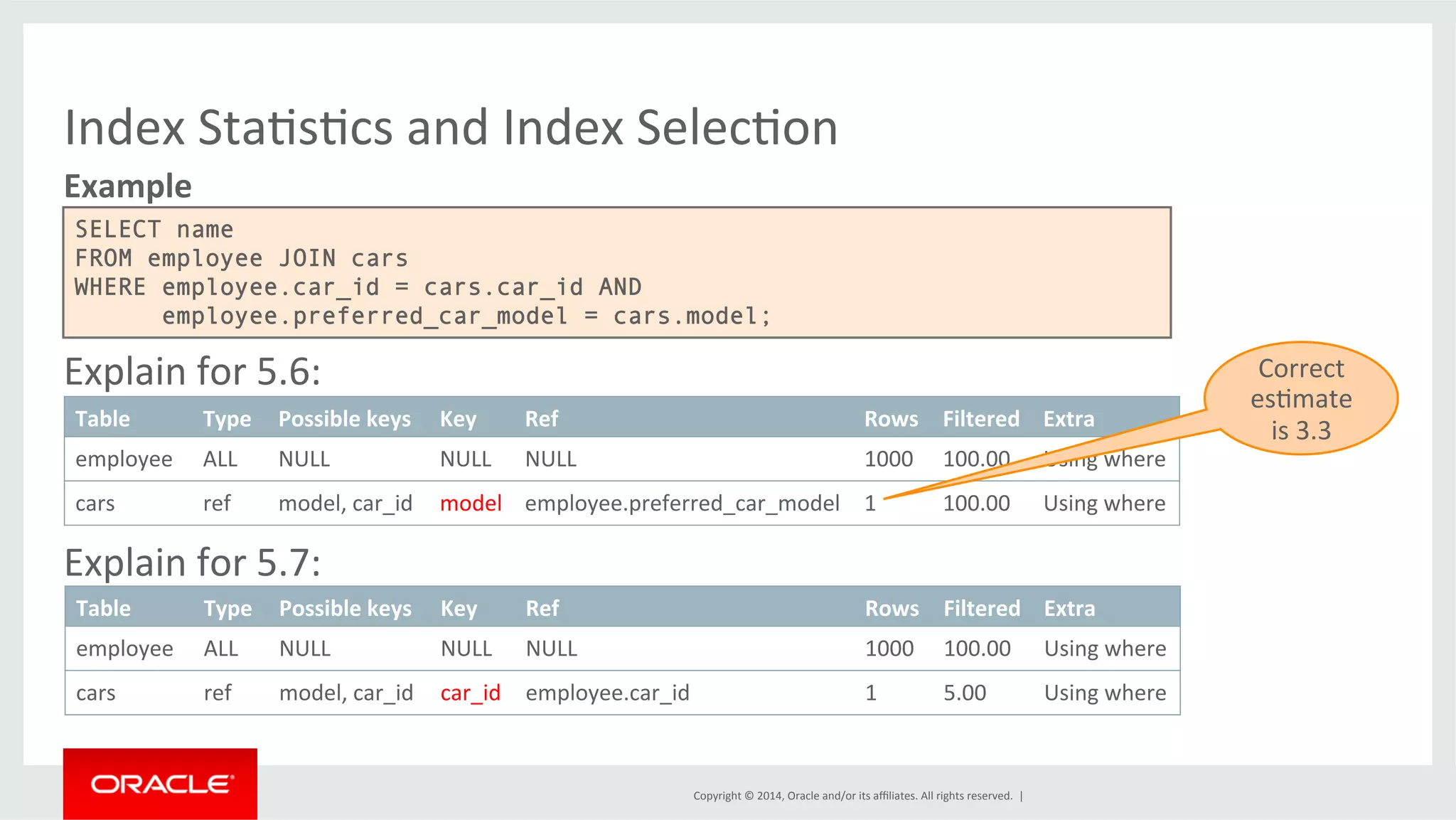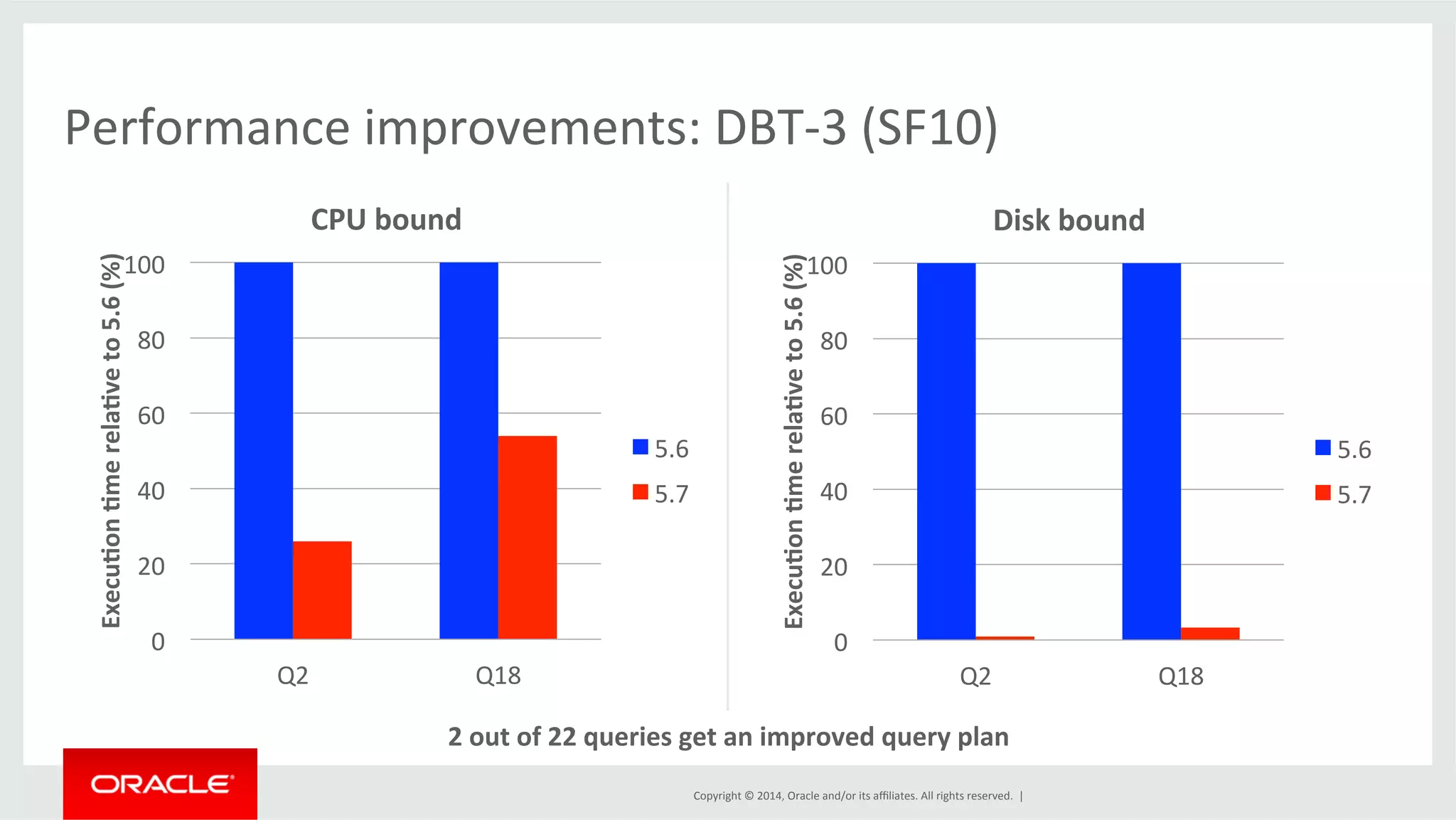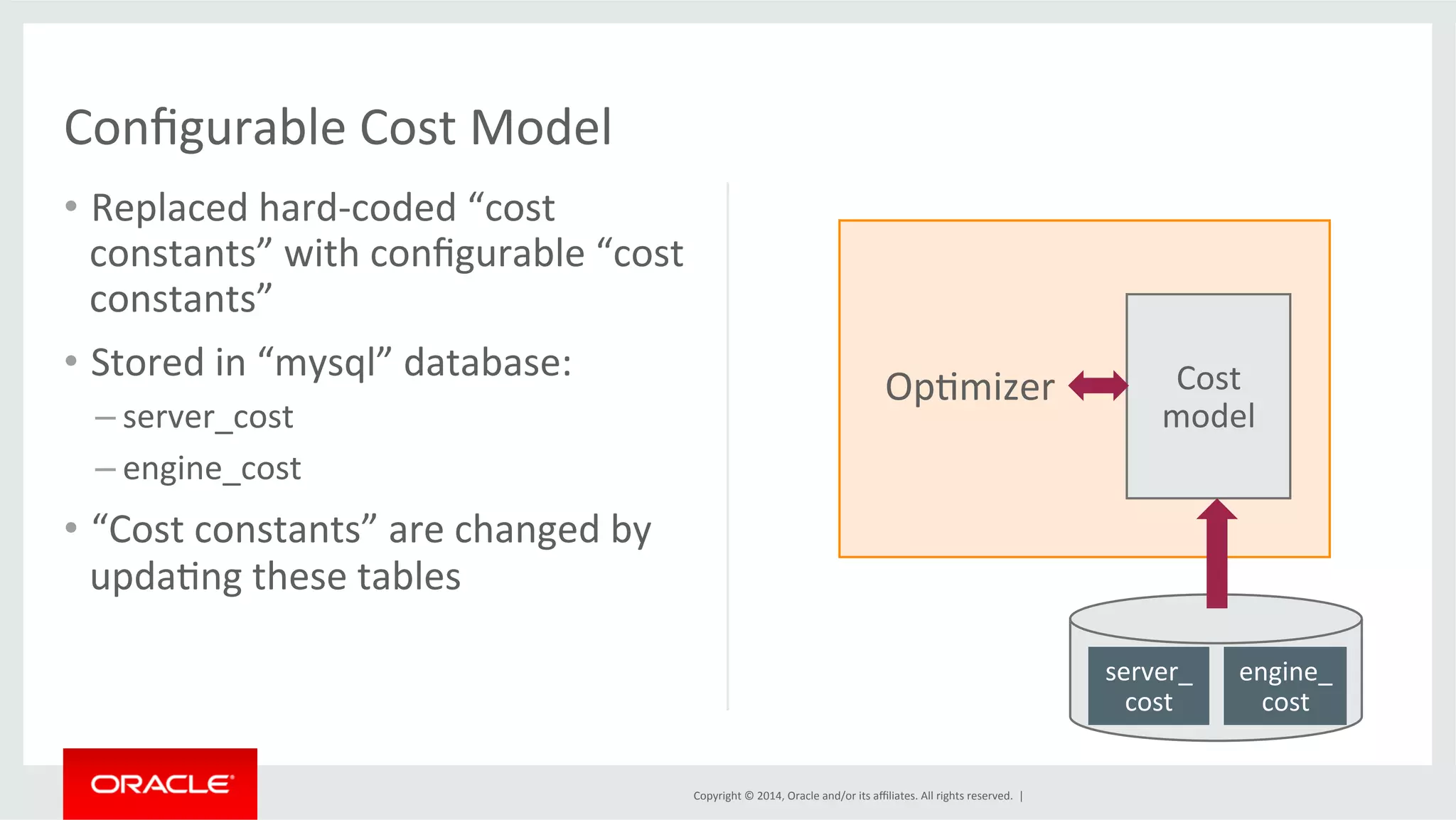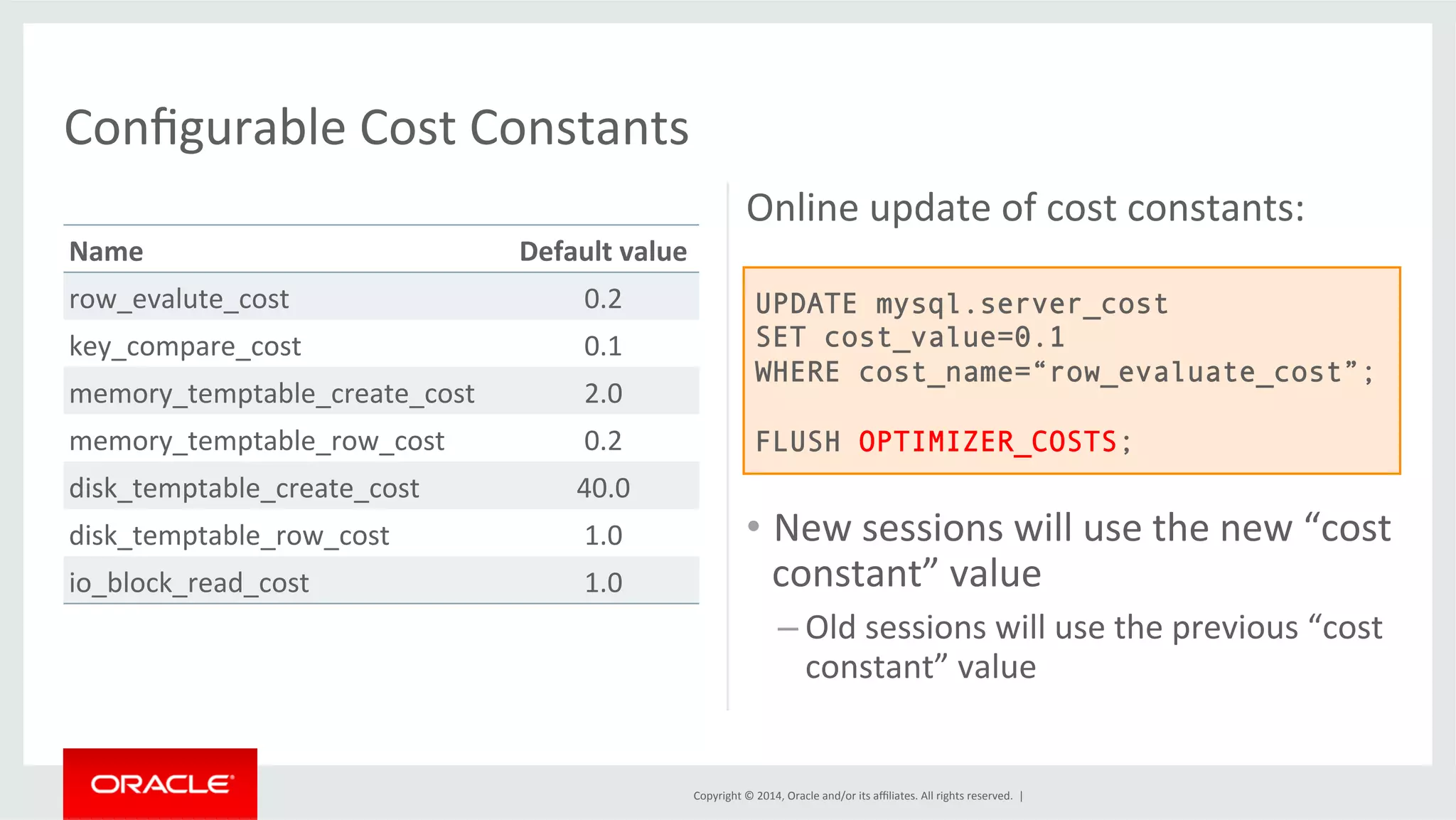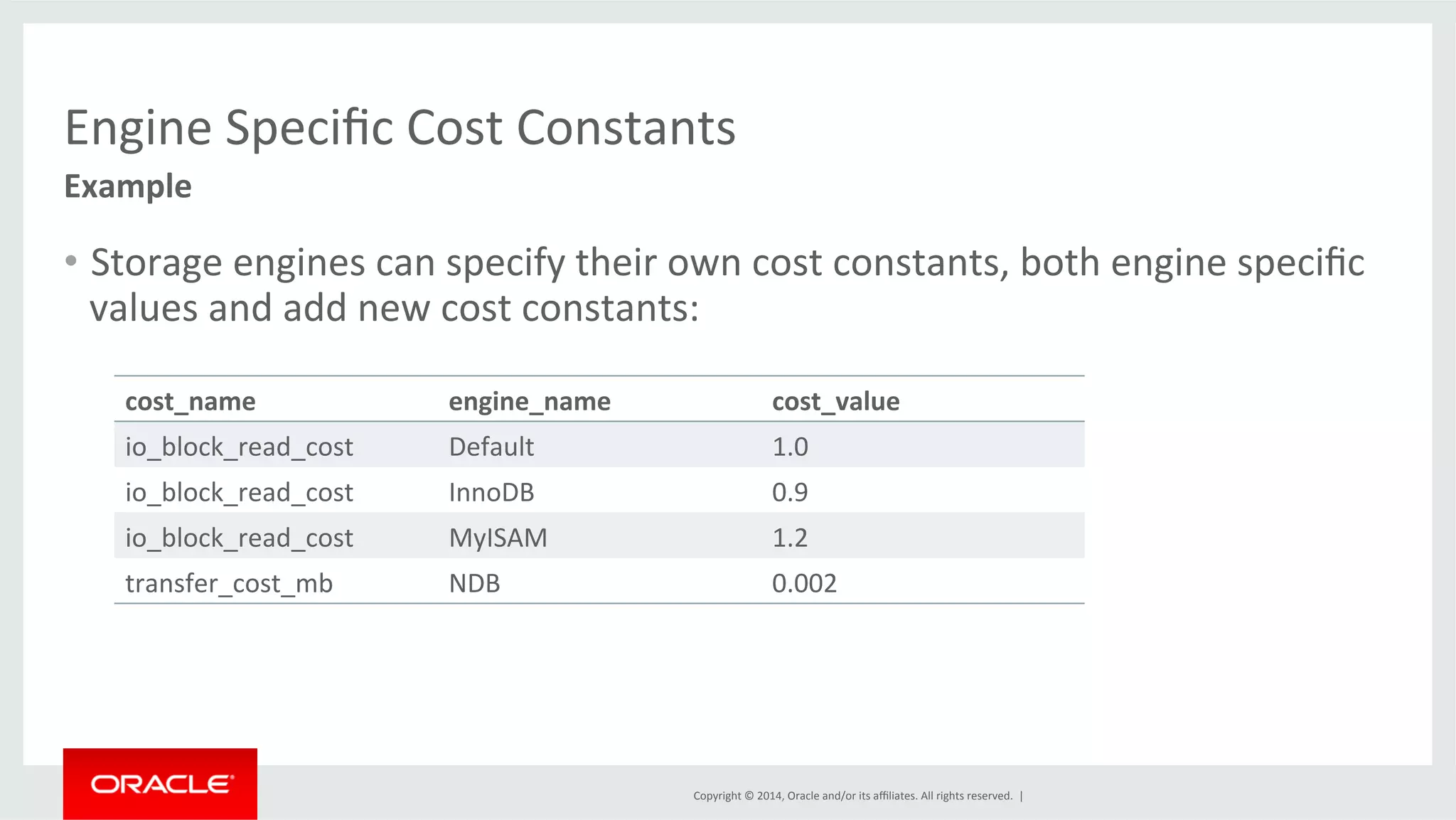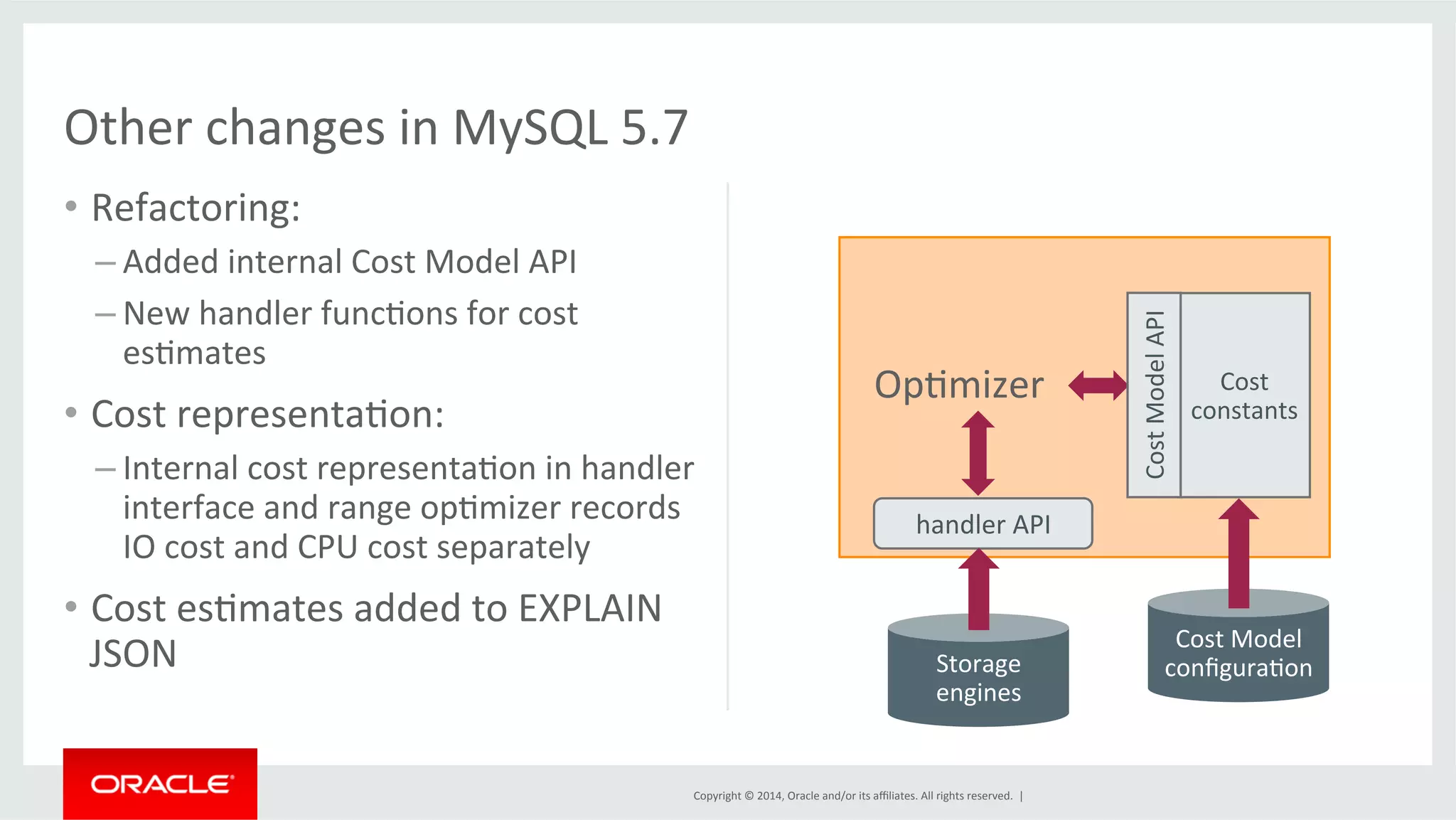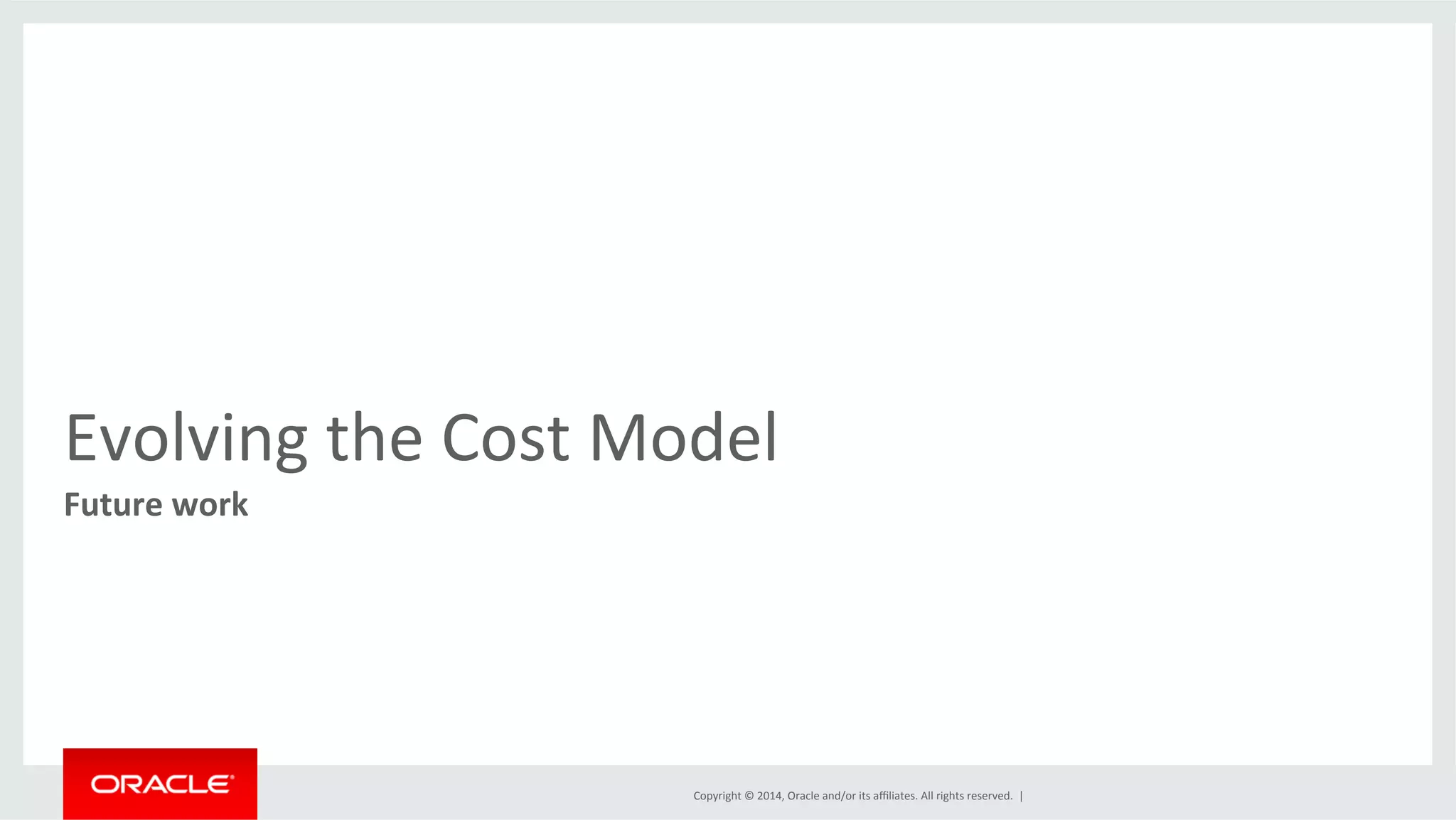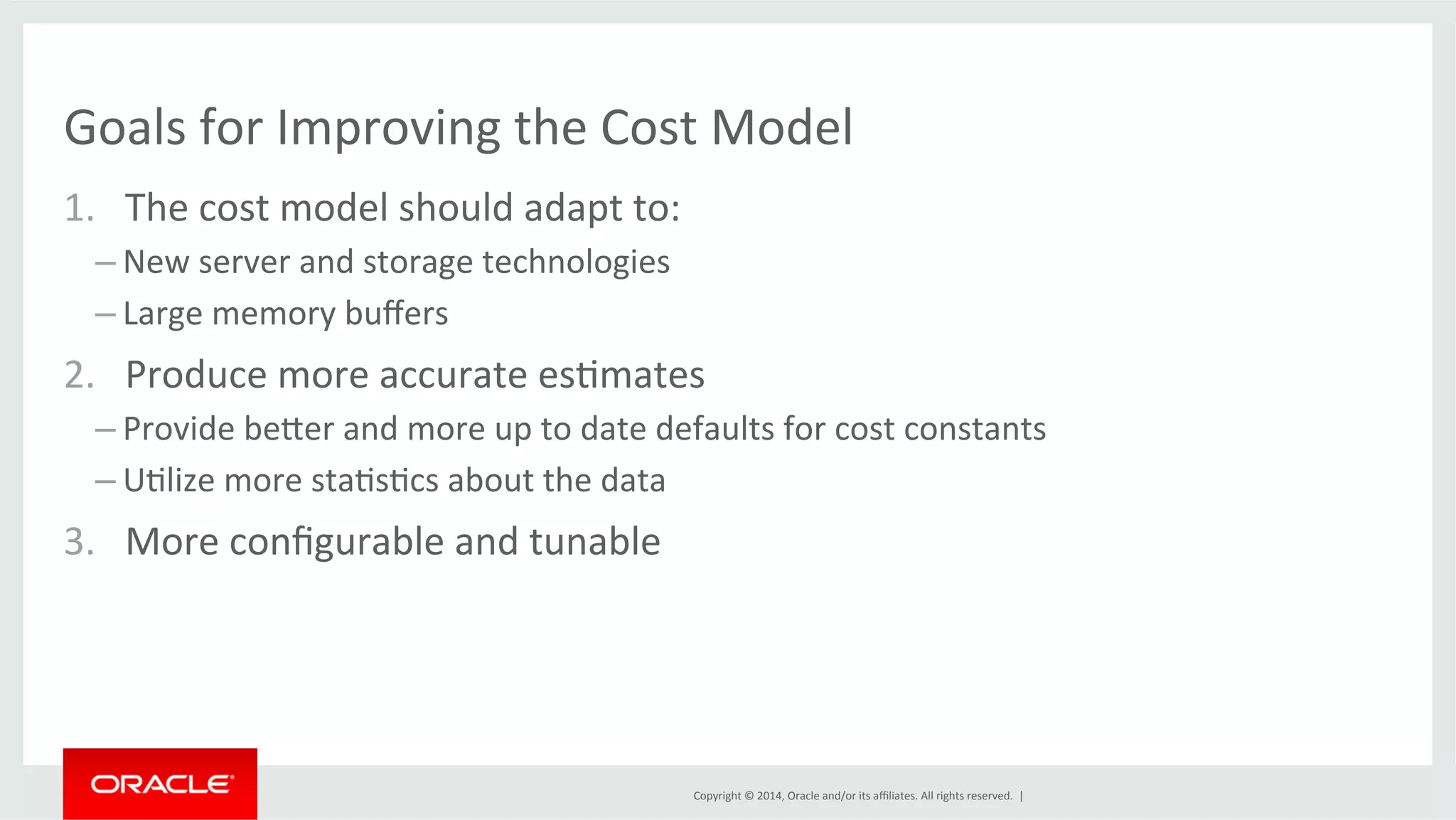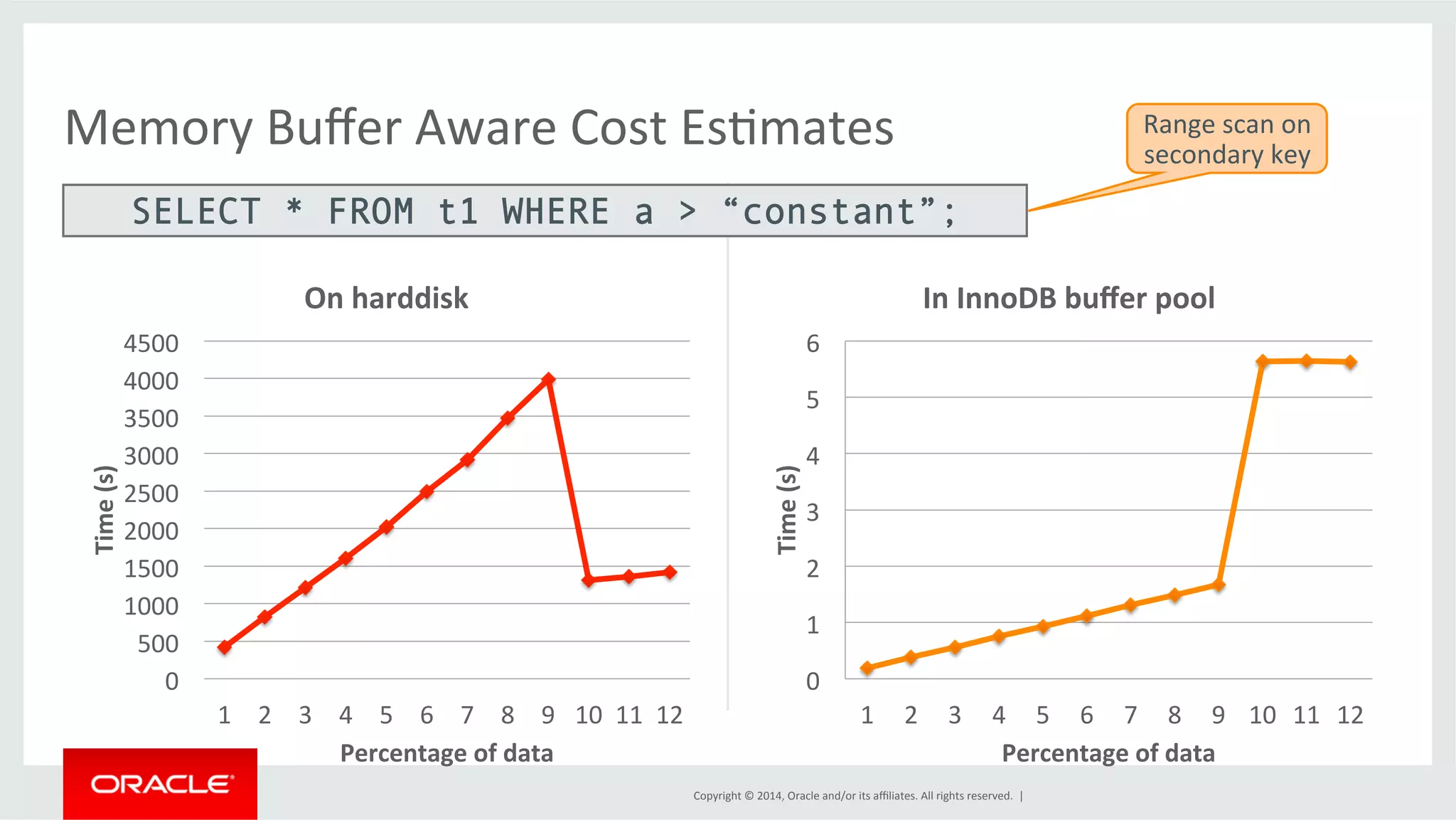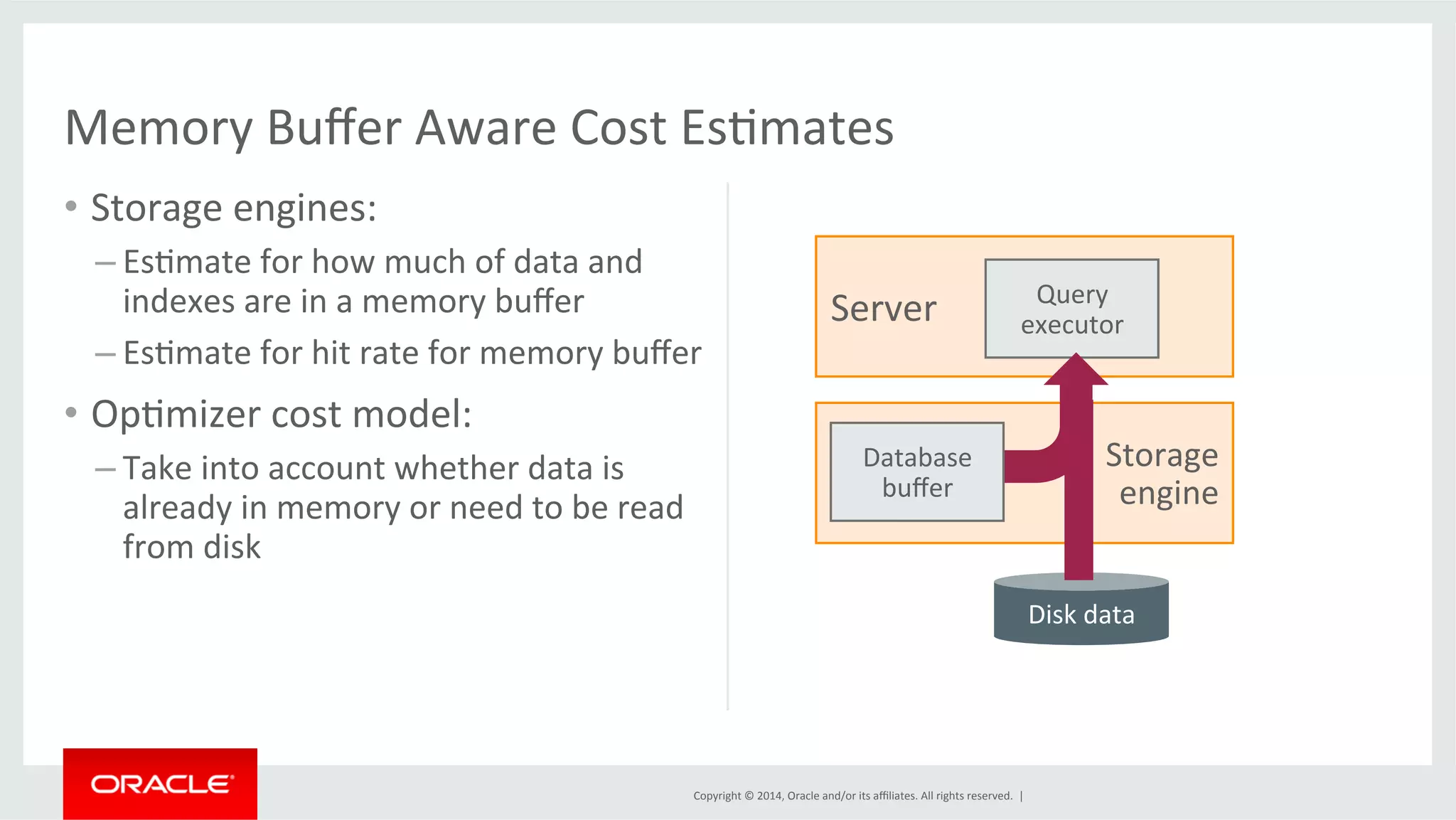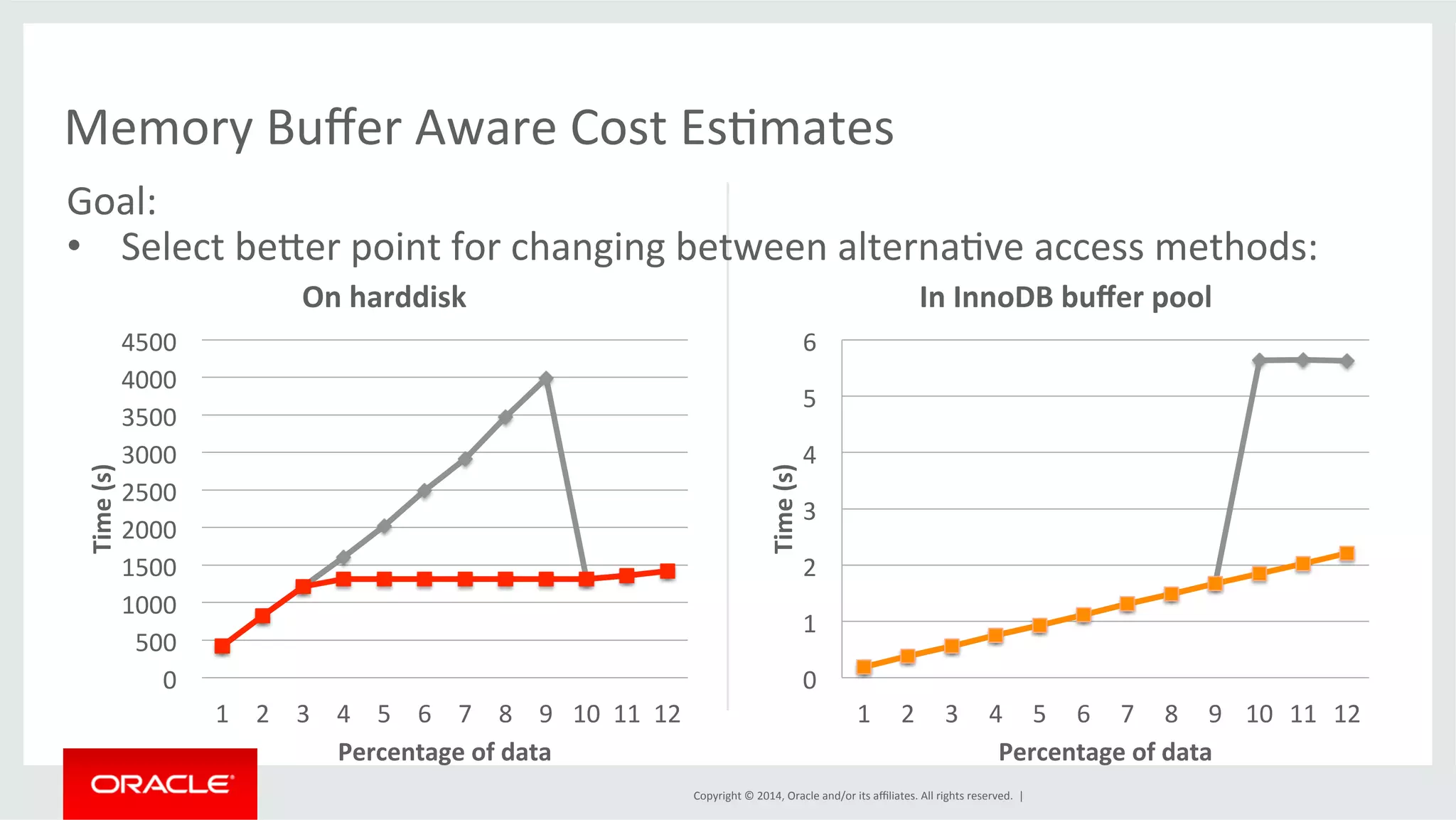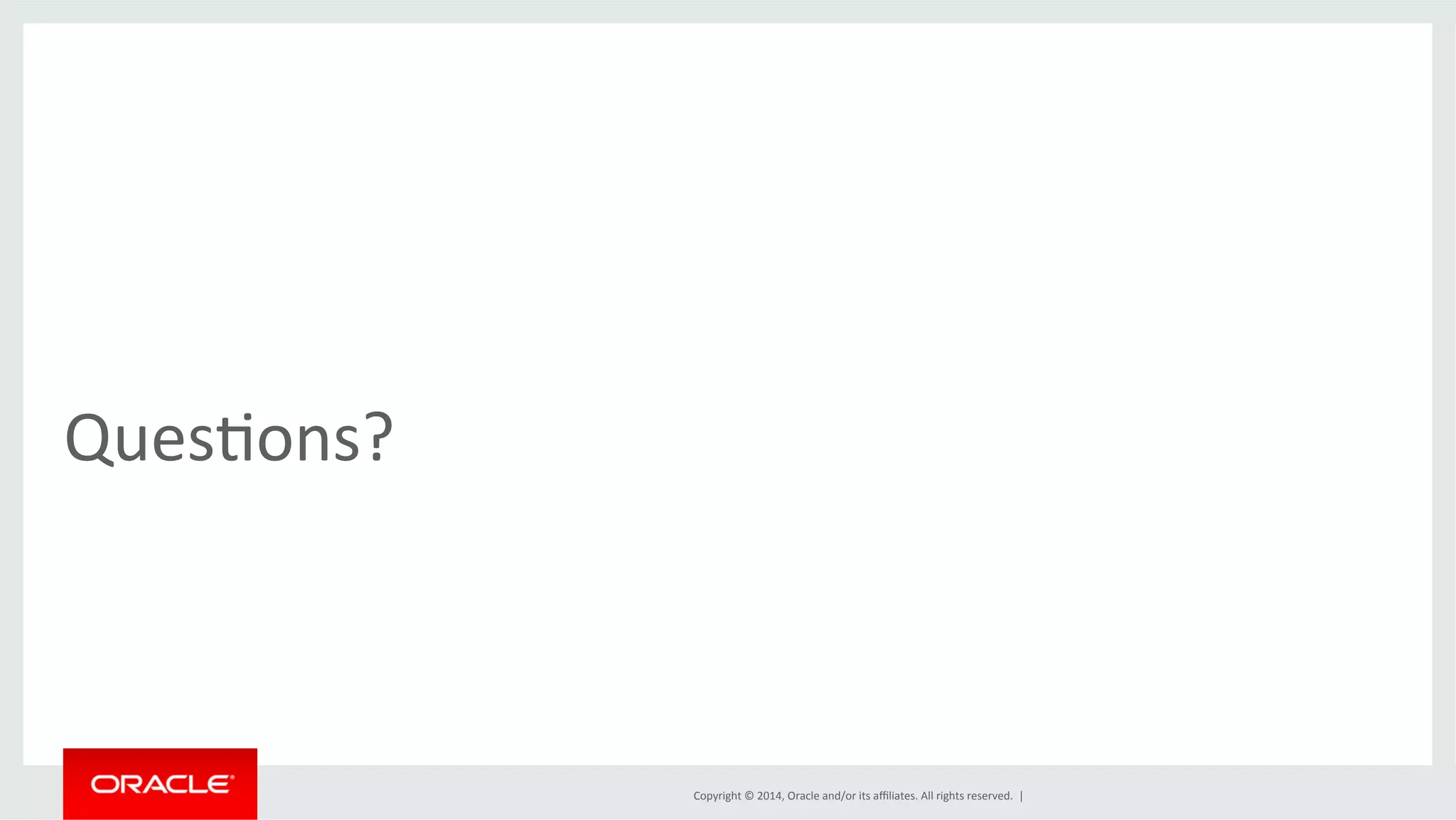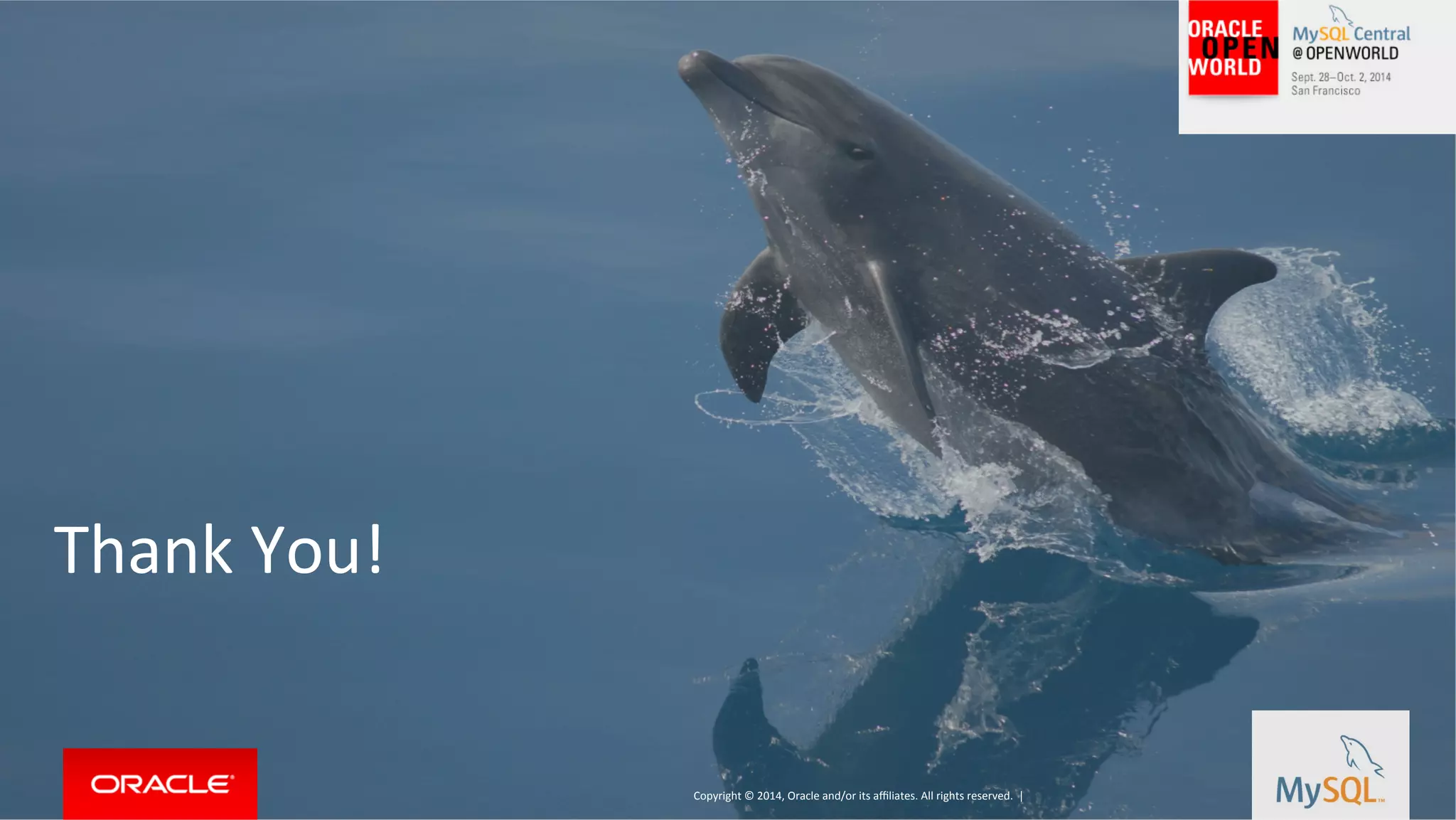The document outlines the improvements in the MySQL cost model introduced in version 5.7, focusing on more accurate cost estimates and performance enhancements for query optimization. It describes how the cost for executing queries is calculated based on operations, hardware, and statistical metrics, and highlights the importance of condition filtering for better join order decisions. Additionally, it covers configurable cost constants and the underlying principles of cost-based query optimization to enhance overall performance.
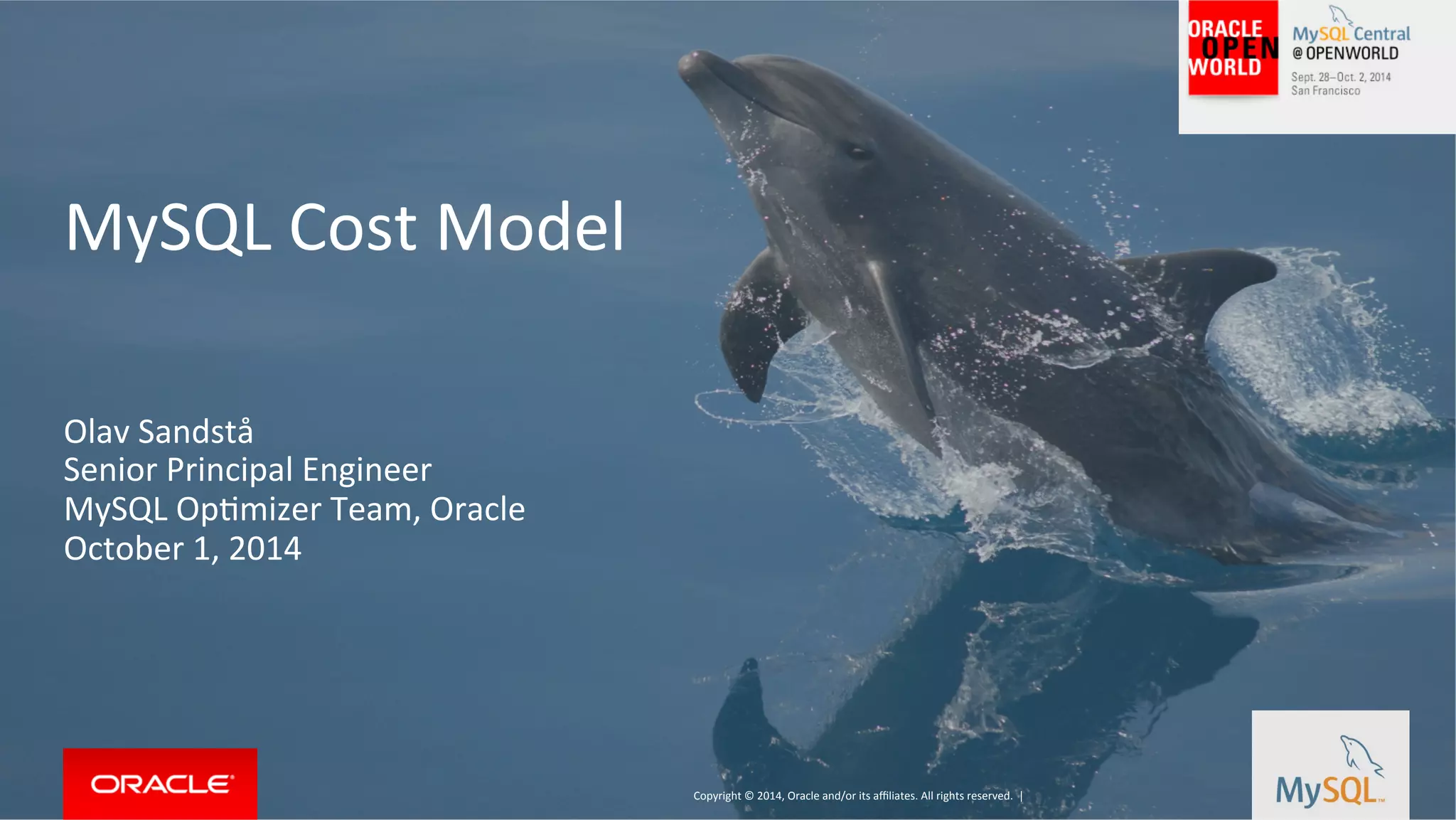
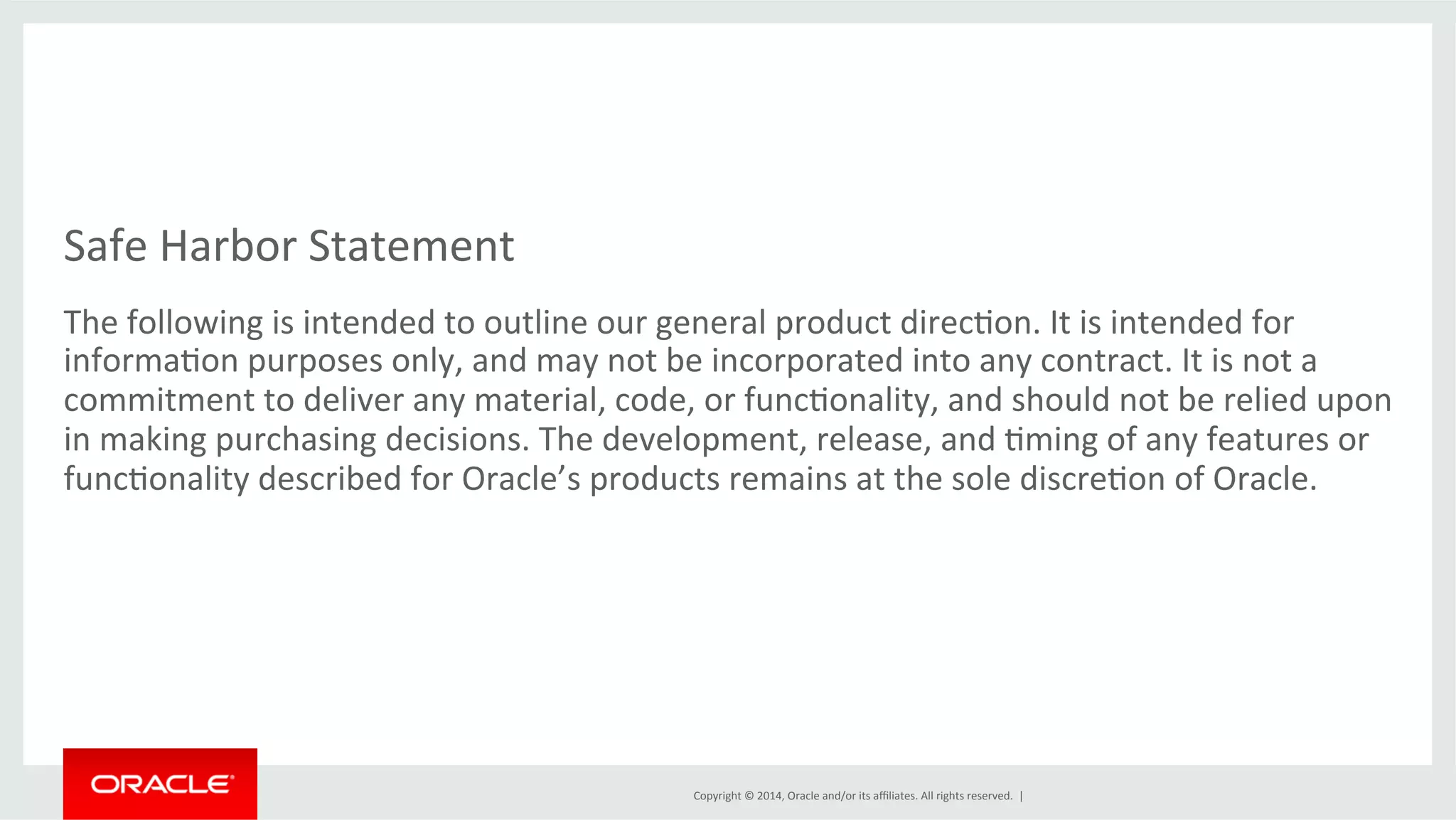
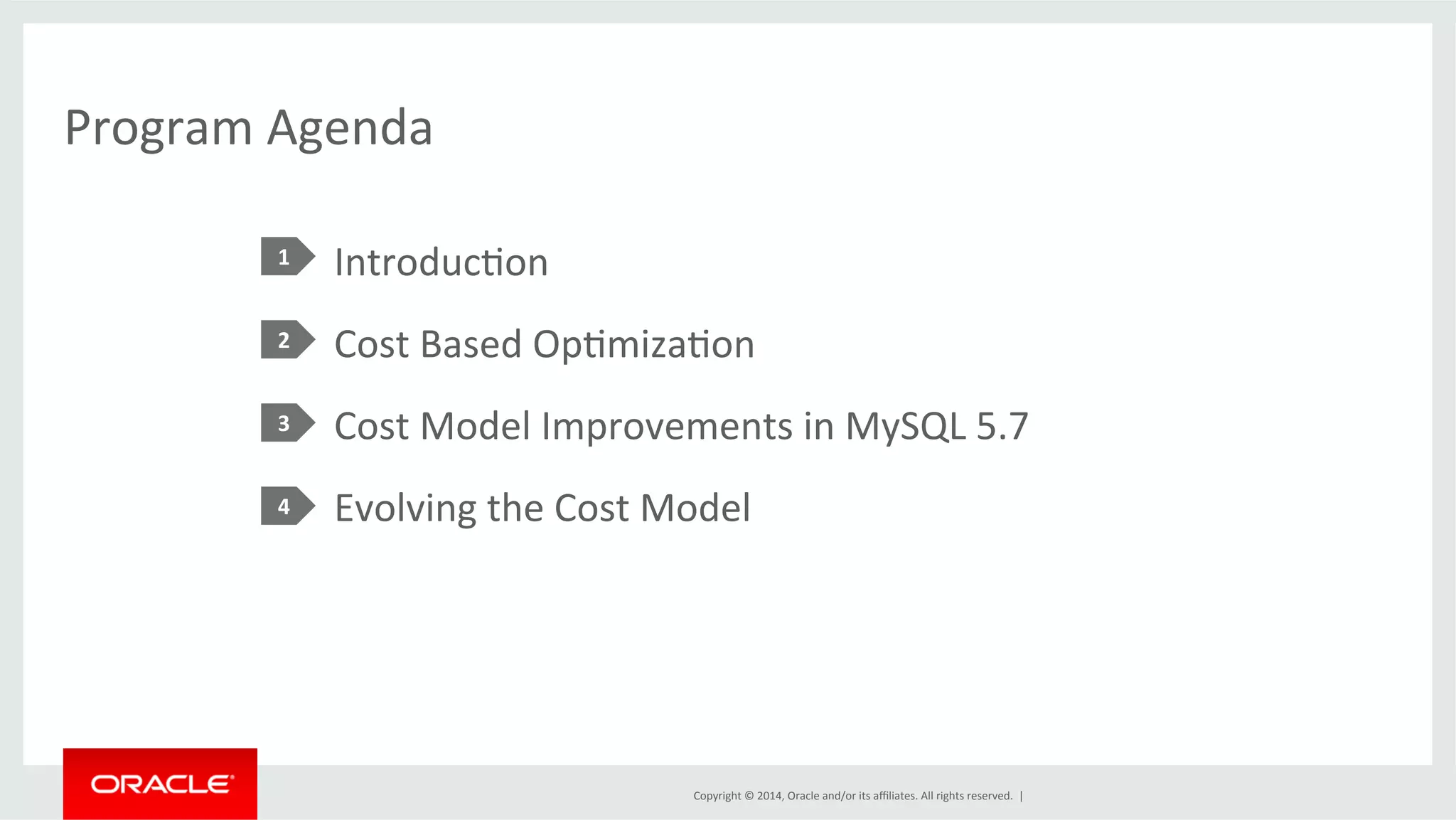
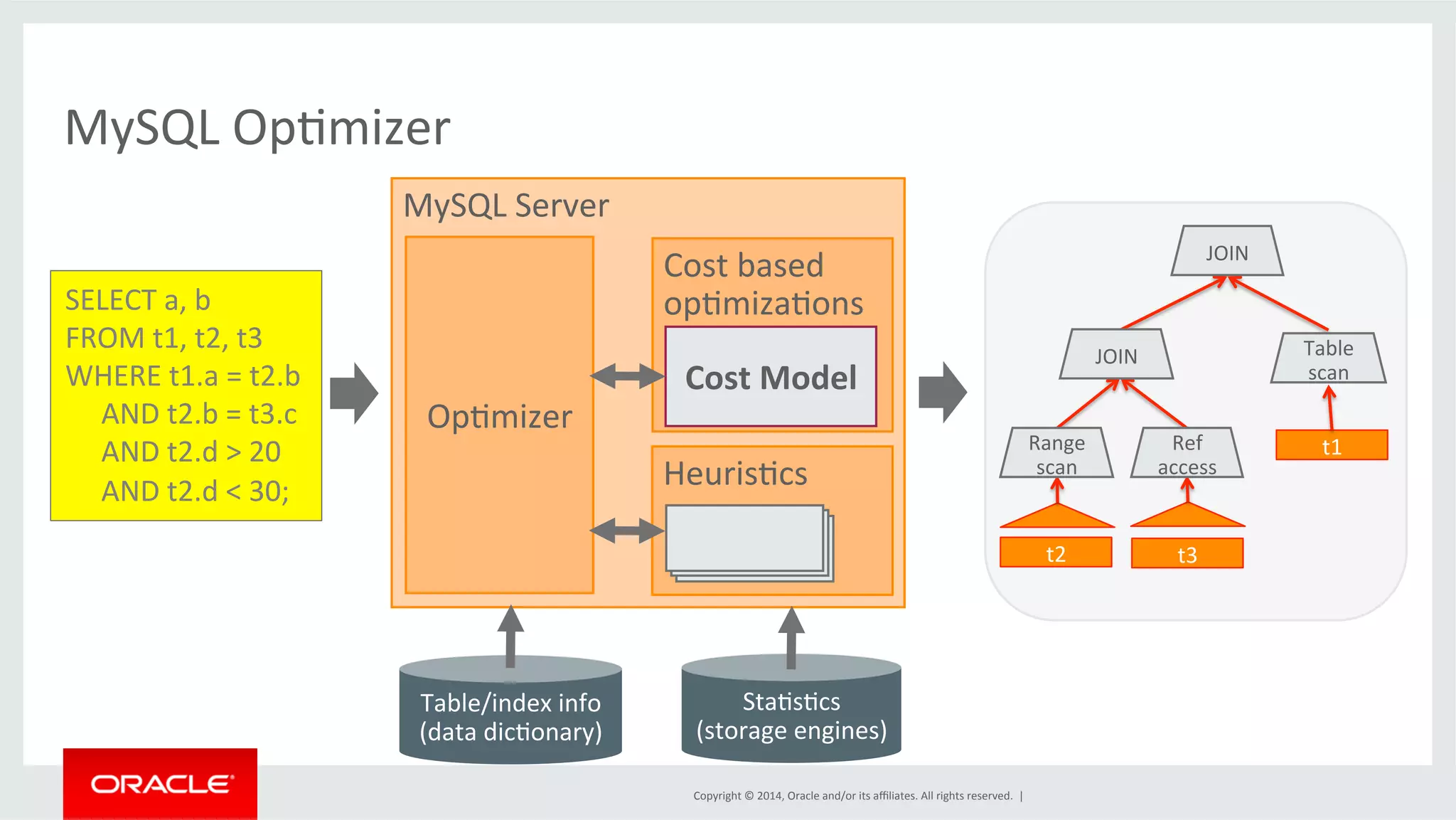
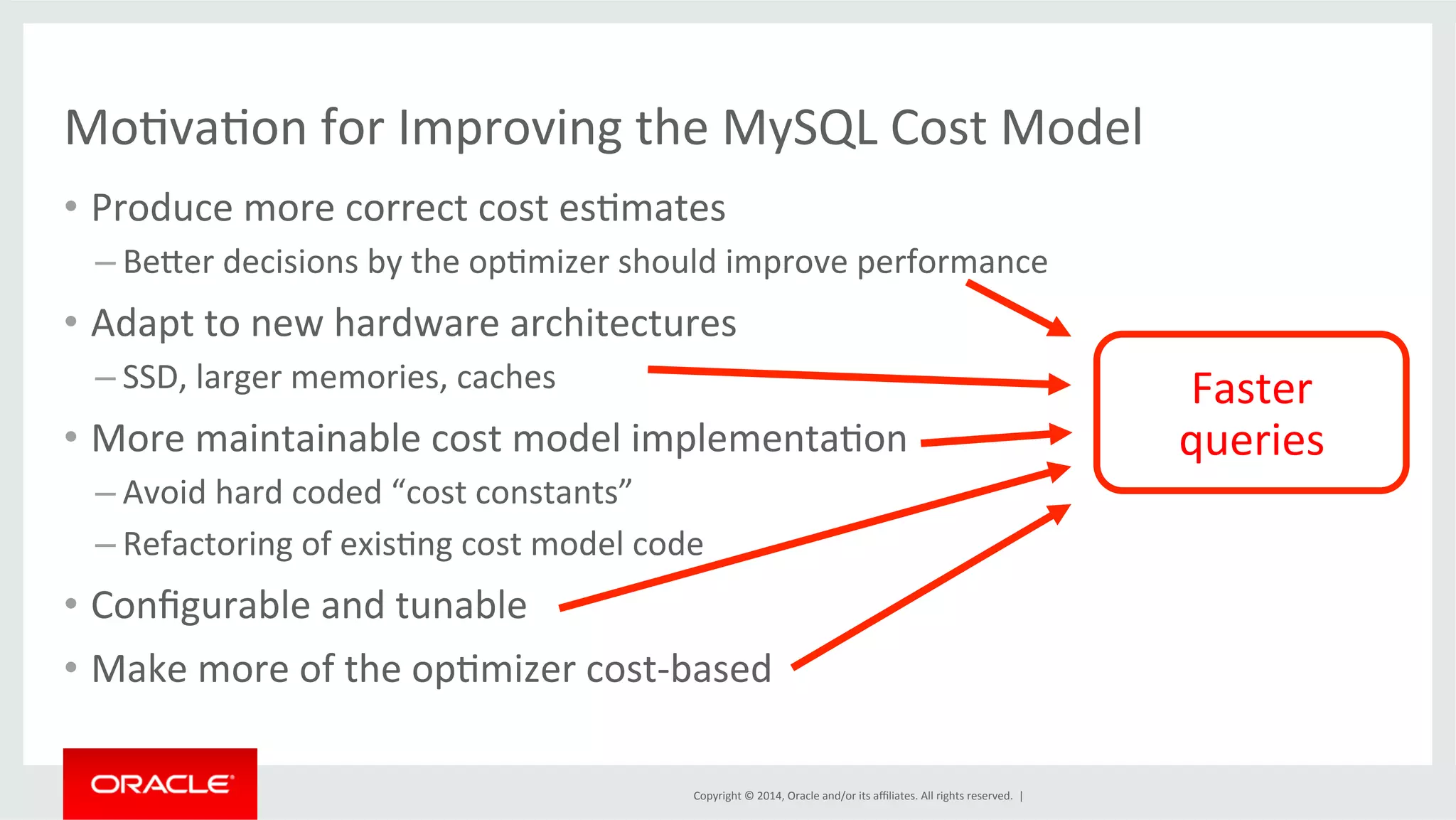
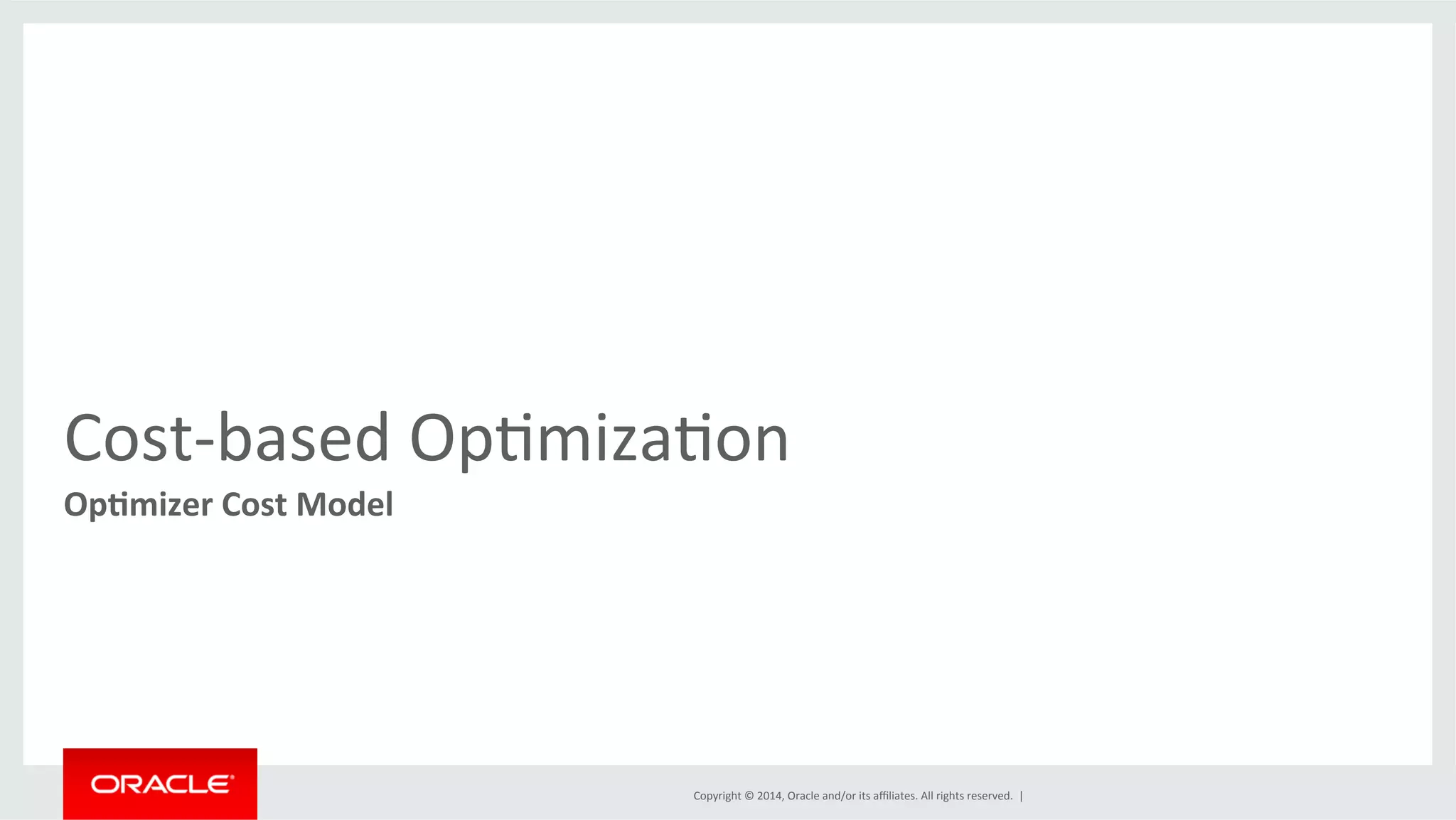
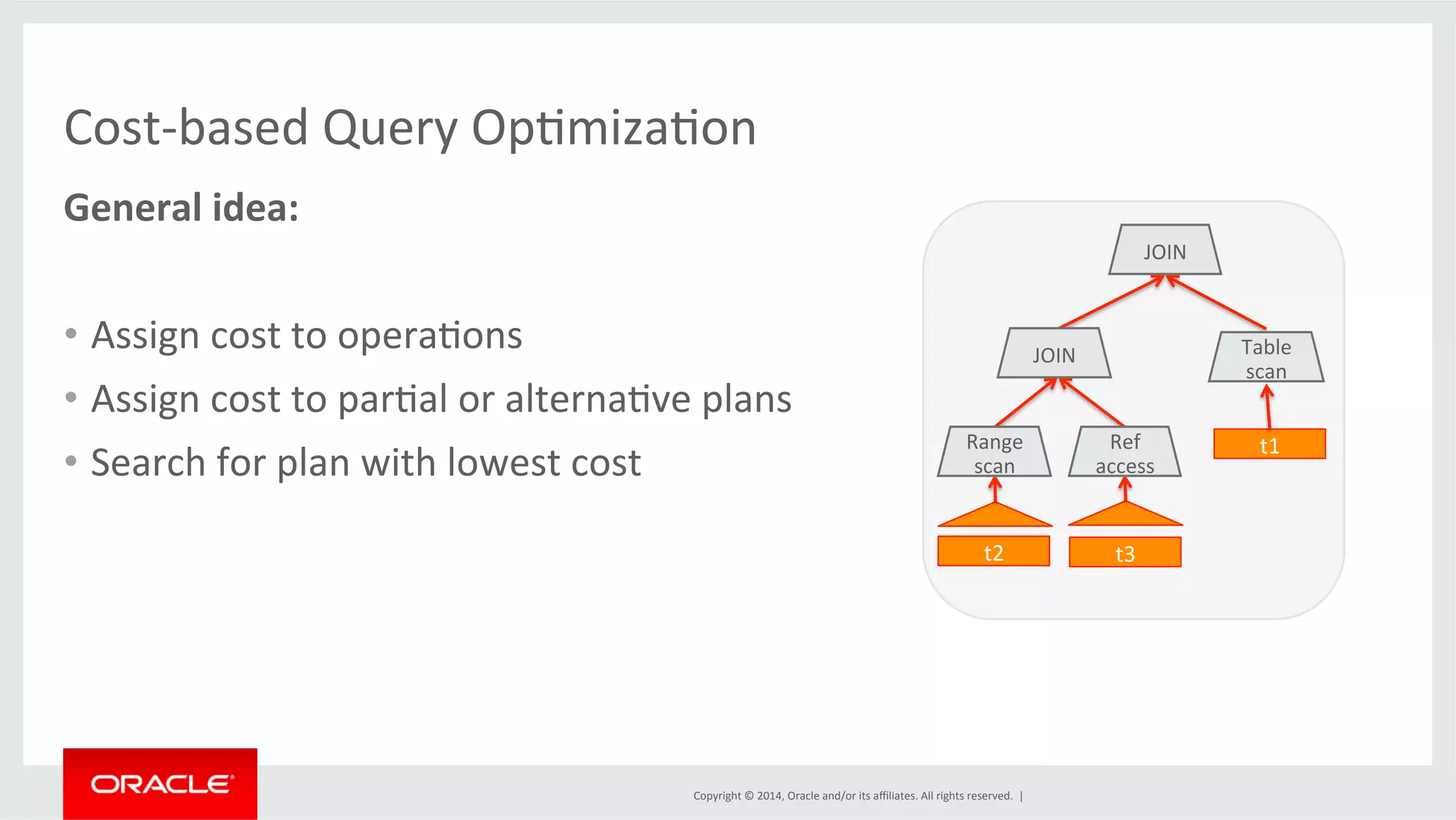
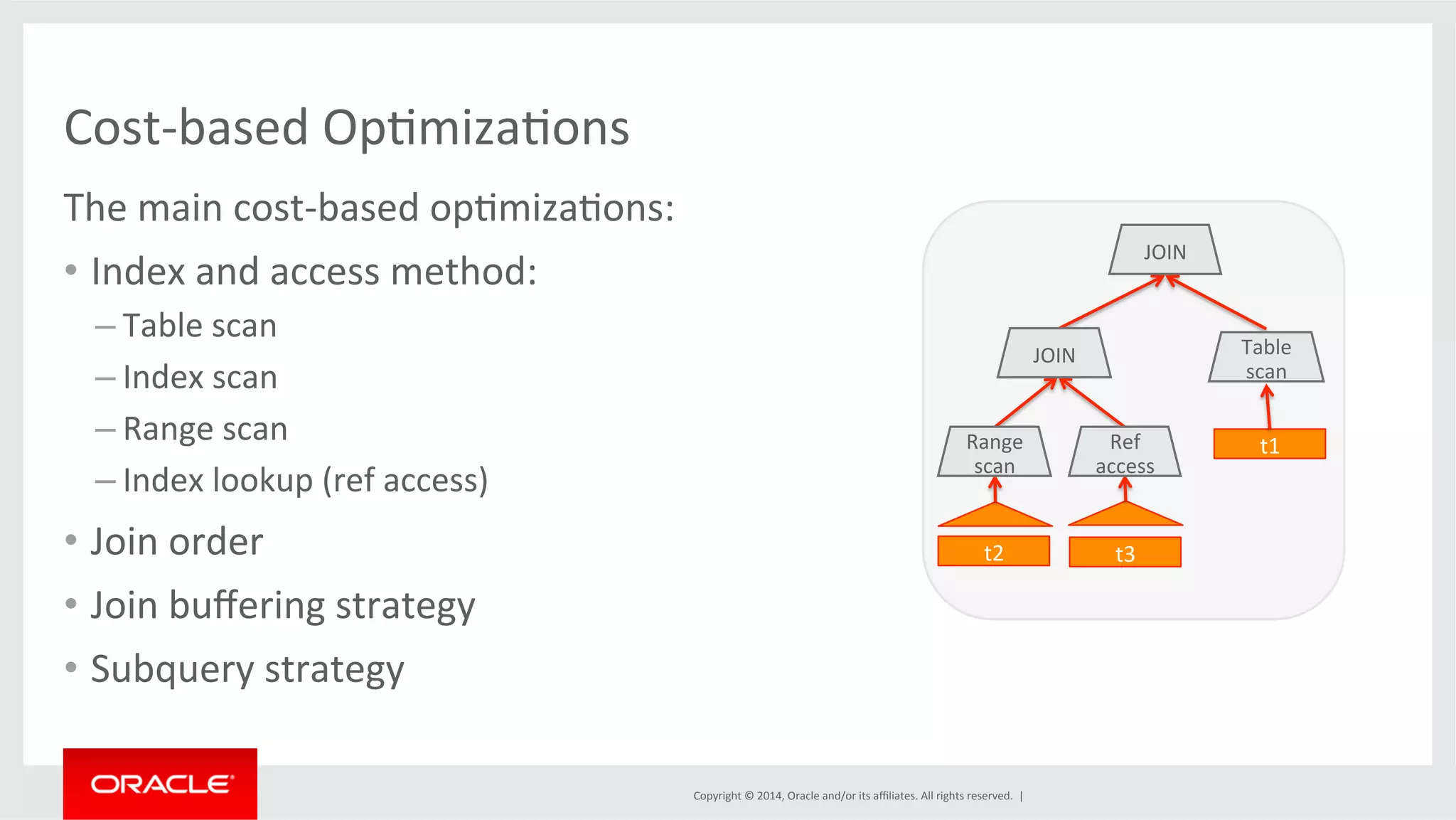
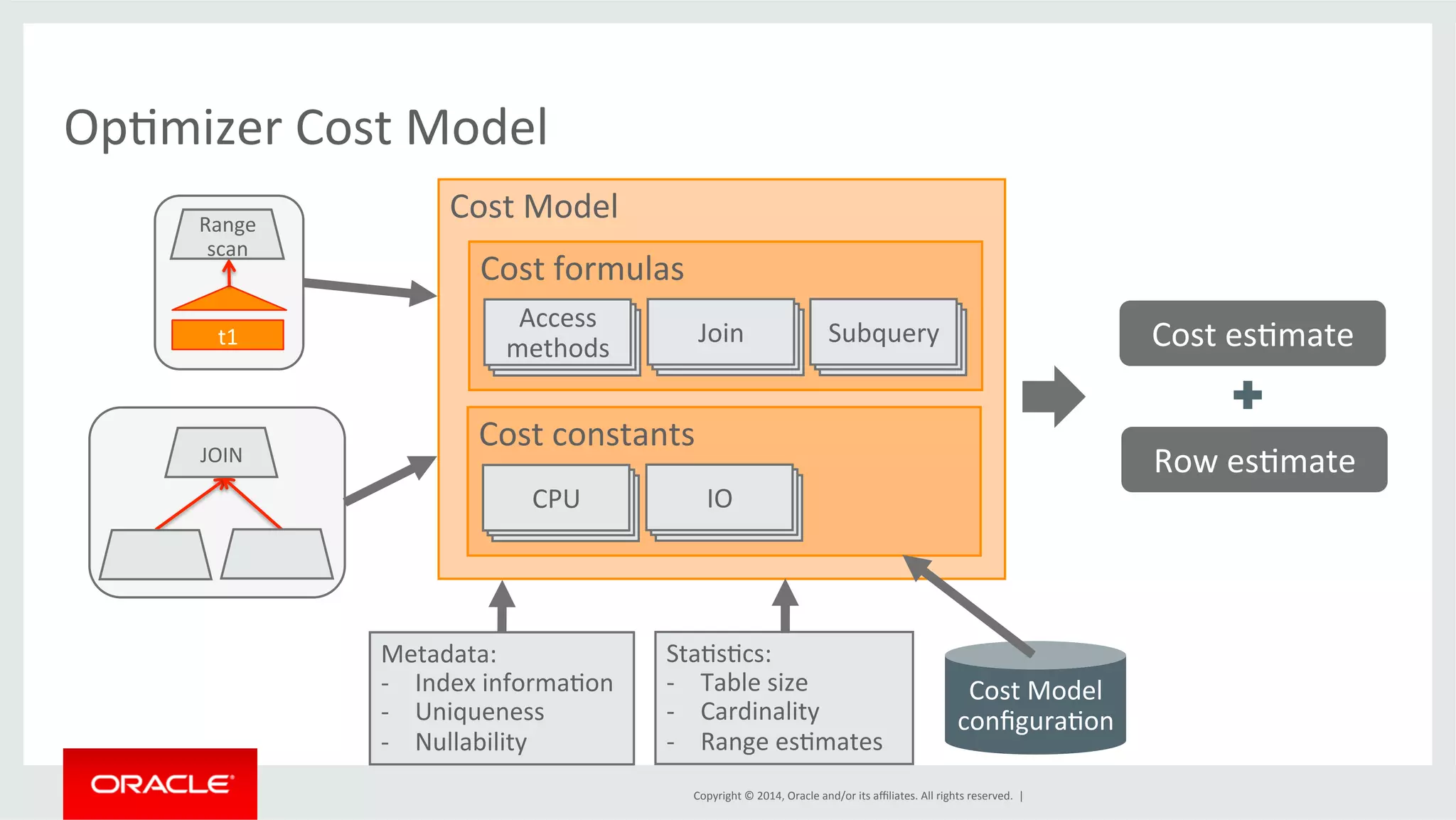
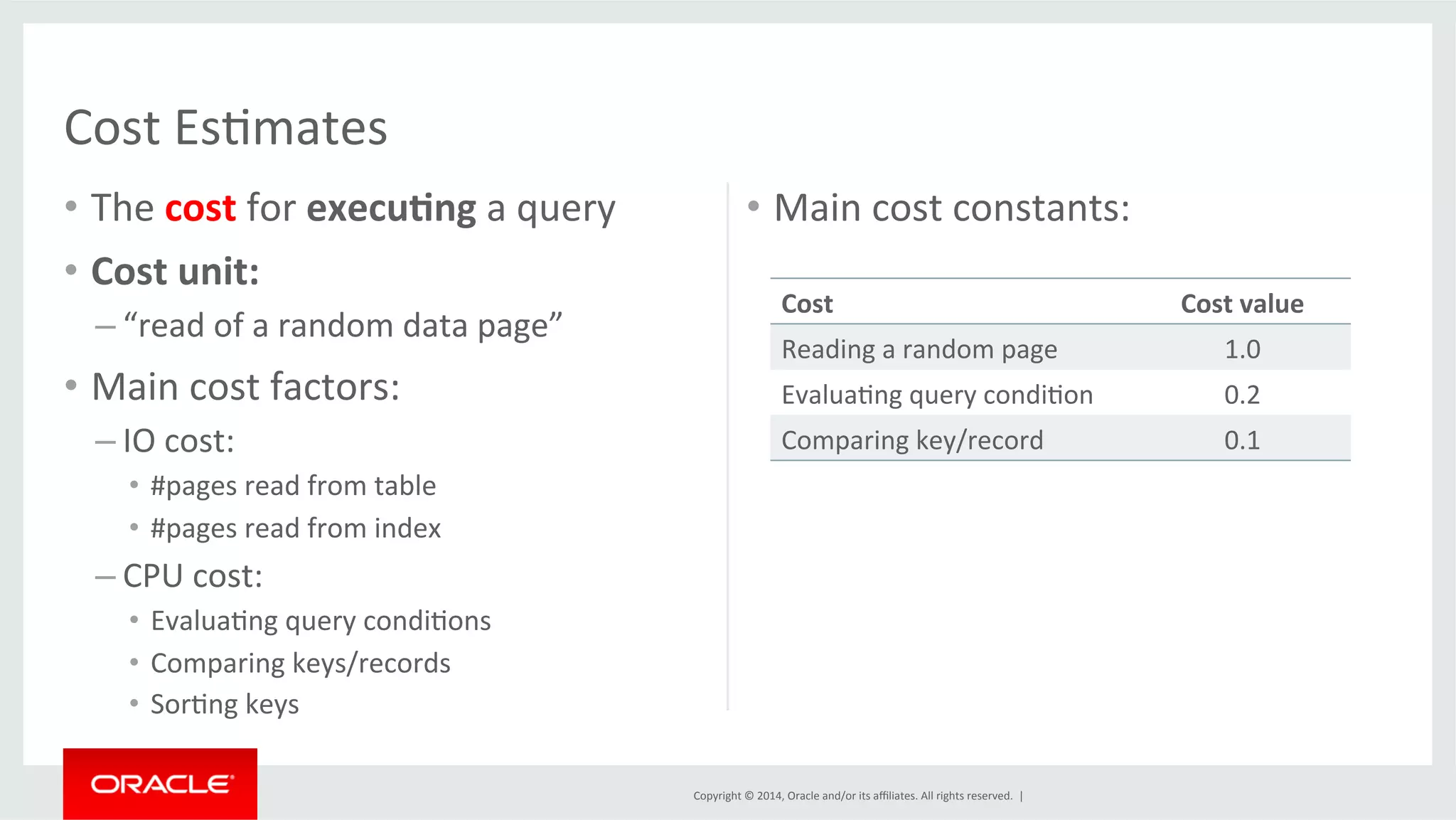
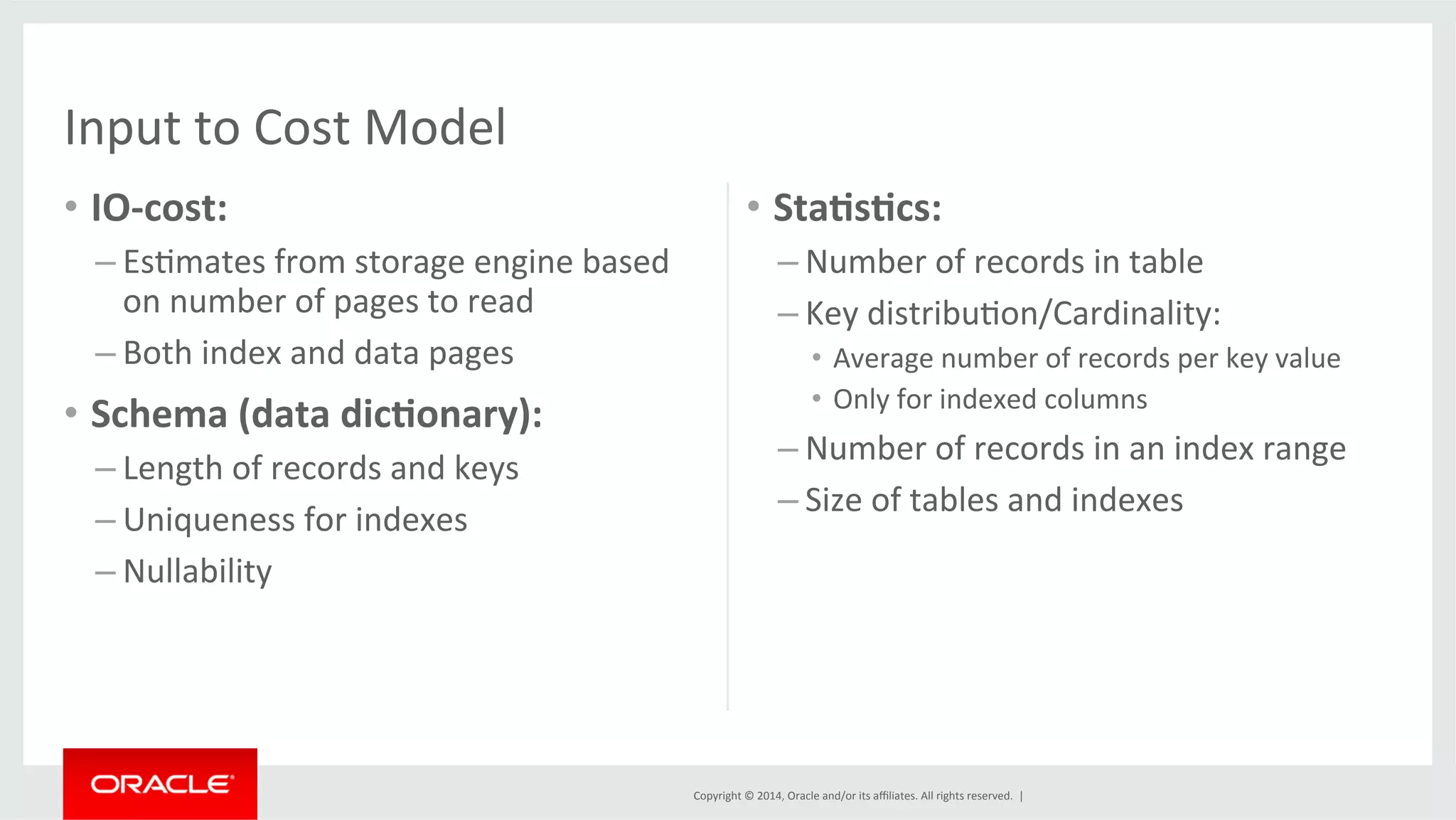

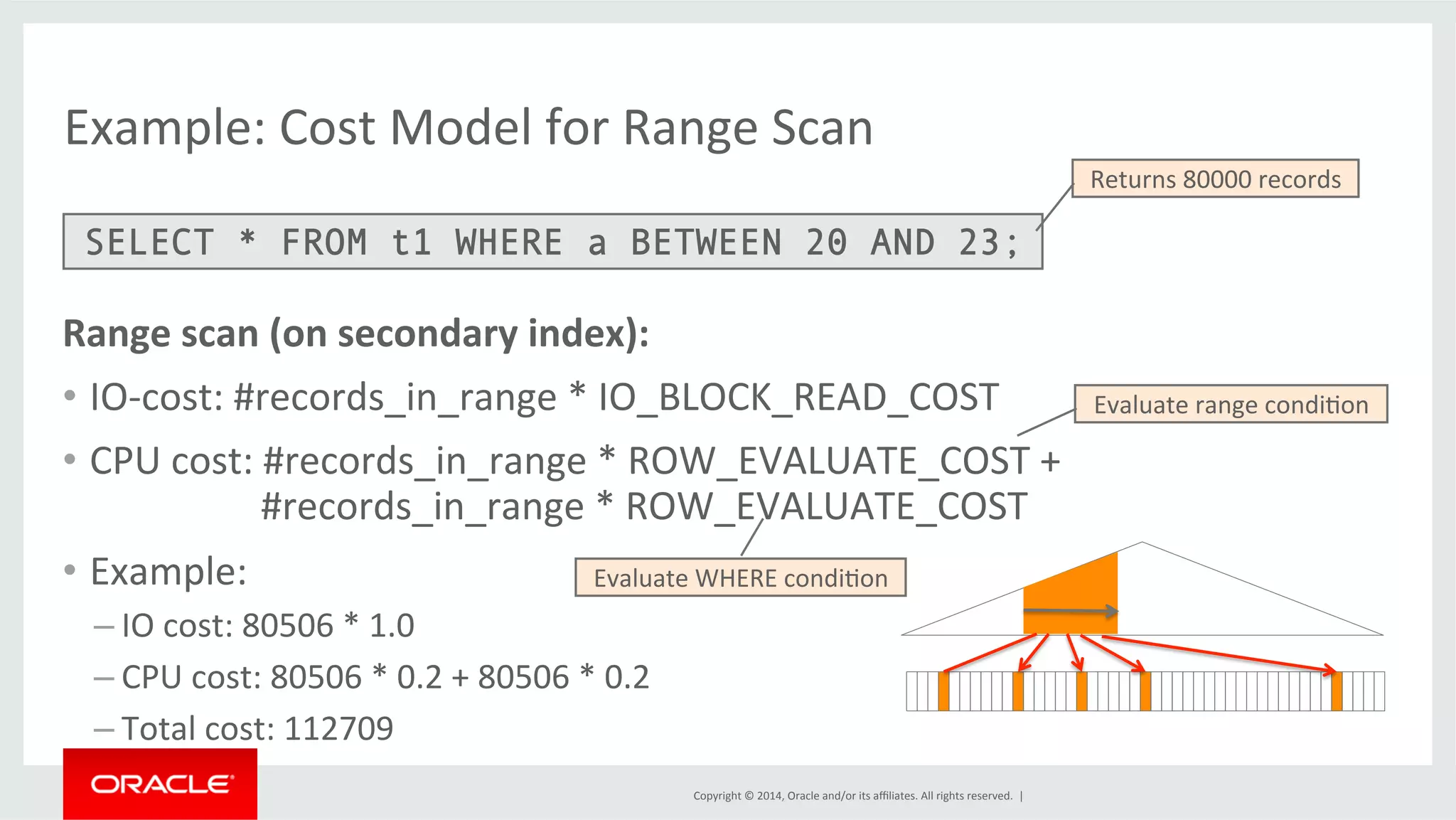
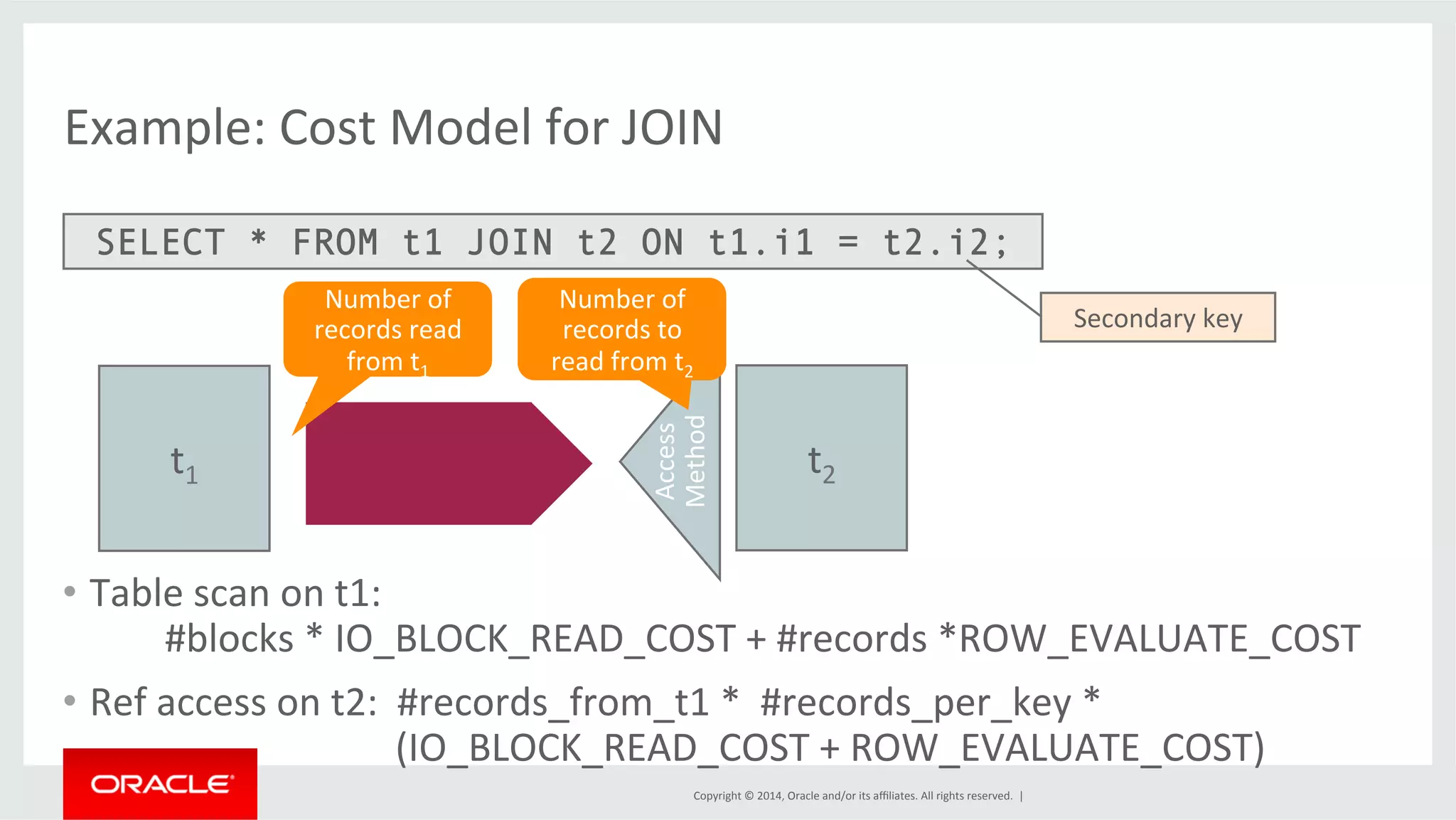
![Copyright
©
2014,
Oracle
and/or
its
affiliates.
All
rights
reserved.
|
• Total
cost
for
query
• Cost
per
table:
– Cost
for
reading
data
– Cost
for
evaluaFng
condiFons
• Cost
for
“join
prefix”
• Output
Cost
in
Explain
JSON
EXPLAIN
FORMAT=JSON
SELECT
*
FROM
t1
WHERE
a
BETWEEN
20
AND
23;
{
"query_block":
{
"select_id":
1,
"cost_info":
{
"query_cost":
"112709.41"
},
"table":
{
"table_name":
"t1",
"access_type":
"range",
"possible_keys":
[
”idx1"
],
….
"rows_examined_per_scan":
80506,
"rows_produced_per_join":
80506,
"filtered":
100,
"index_condiFon":
"(`test`.`t1`.`a`
between
20
and
23)",
"cost_info":
{
"read_cost":
"96608.21",
"eval_cost":
"16101.20",
"prefix_cost":
"112709.41",
"data_read_per_join":
"19M"
},
}
}](https://image.slidesharecdn.com/mysqlcostmodel2014-141001234820-phpapp02/75/MySQL-Optimizer-Cost-Model-15-2048.jpg)
![Copyright
©
2014,
Oracle
and/or
its
affiliates.
All
rights
reserved.
|
Cost
in
OpFmizer
Trace
• Contains
rows
and
cost
esFmates
• Contains
the
result
from
the
cost
evaluaFon
"rows_esFmaFon":
[
{
"table":
"`t1`",
"range_analysis":
{
"table_scan":
{
"rows":
9575168,
"cost":
2.11e6
},
...
"analyzing_range_alternaFves":
{
"range_scan_alternaFves":
[
{
"index":
”idx",
"ranges":
[
"20
<=
a
<=
23"
],
...
"rows":
80506,
"cost":
96608,
"chosen":
true
}
],
},
SET optimizer_trace=“enabled=ON”;
SELECT * FROM t1 WHERE a BETWEEN 20 AND 23;
SELECT *
FROM INFORMATION_SCHEMA.OPTIMIZER_TRACE;](https://image.slidesharecdn.com/mysqlcostmodel2014-141001234820-phpapp02/75/MySQL-Optimizer-Cost-Model-16-2048.jpg)
